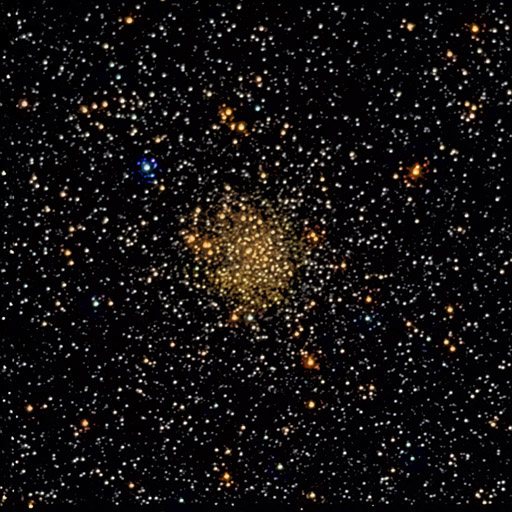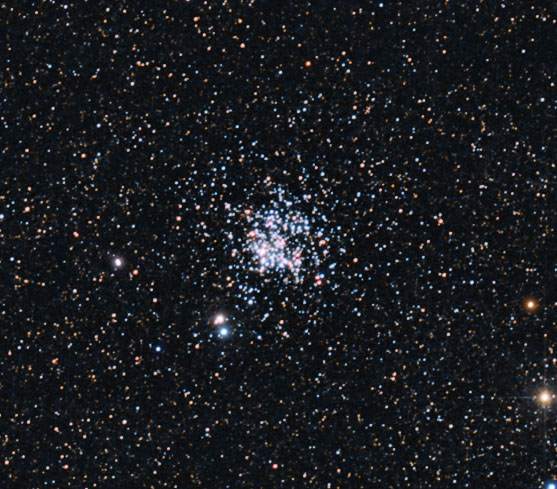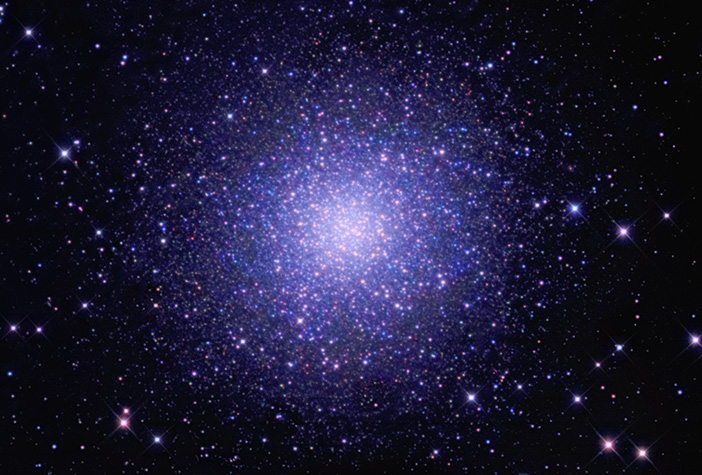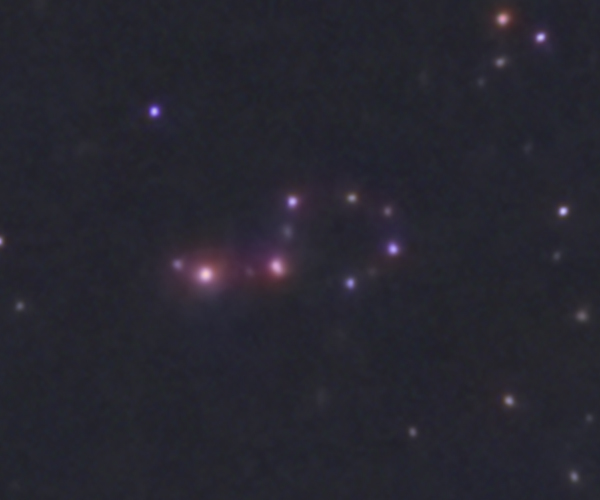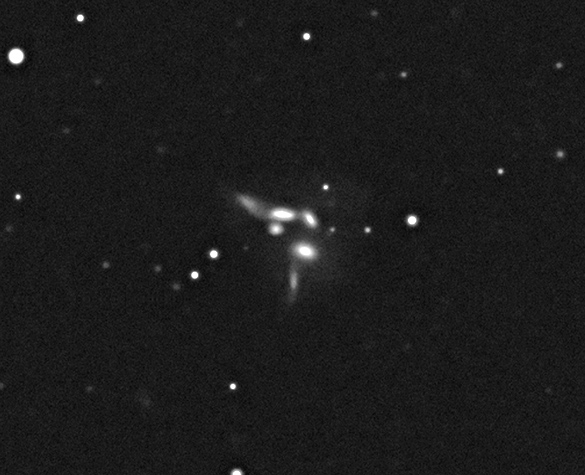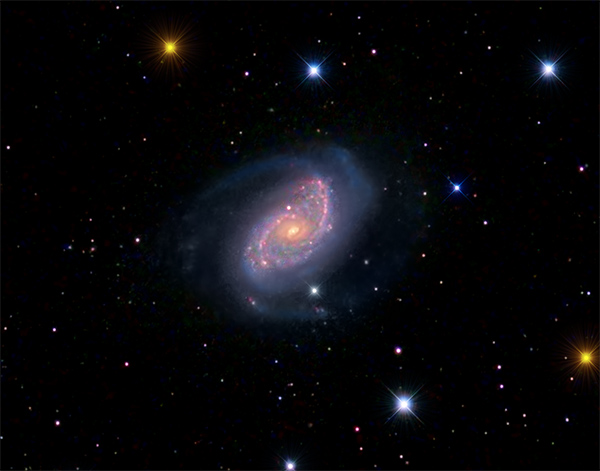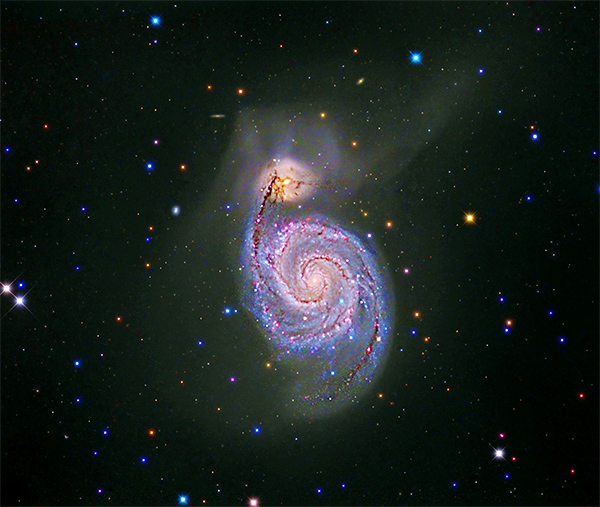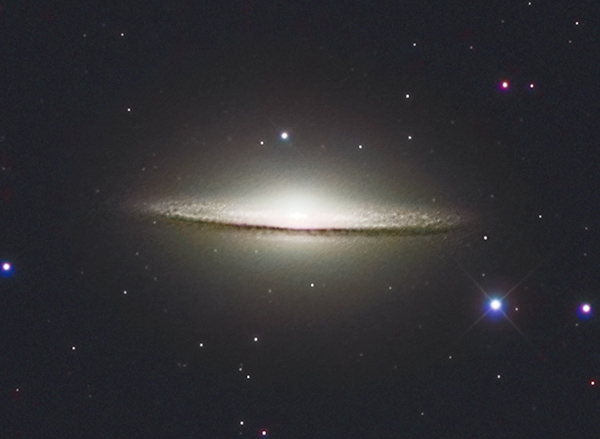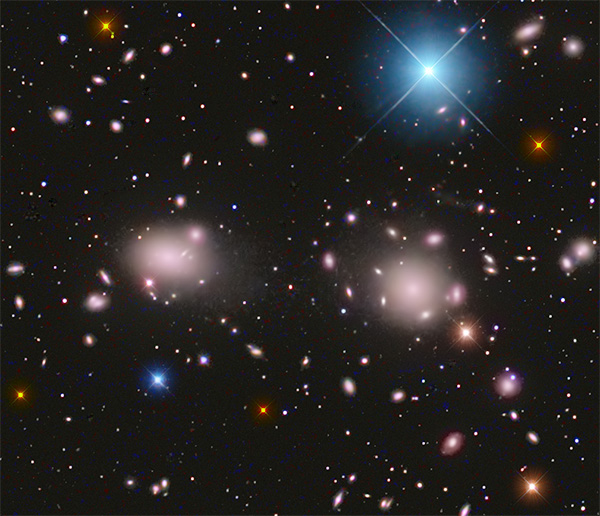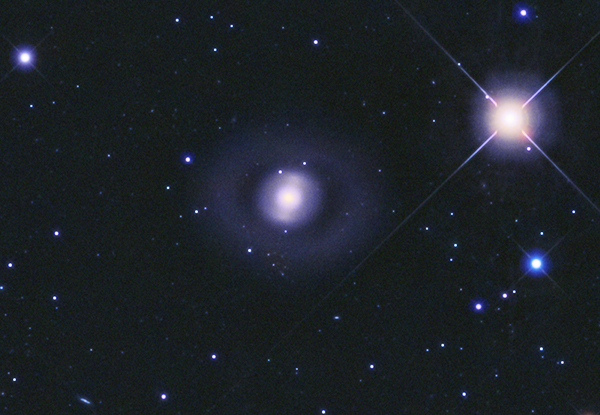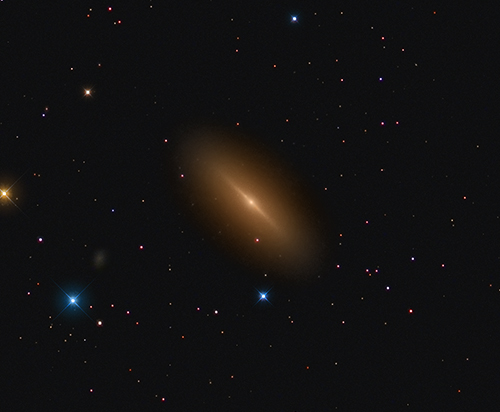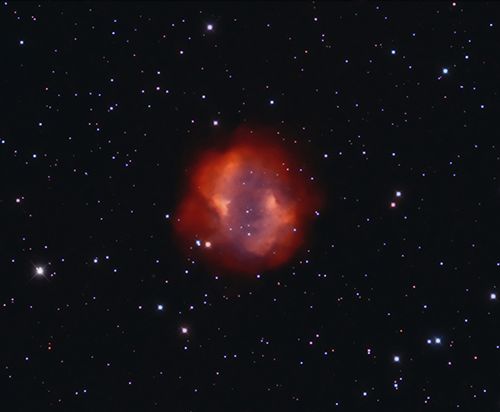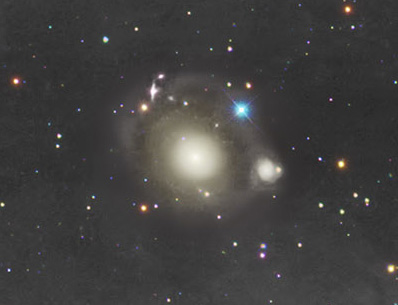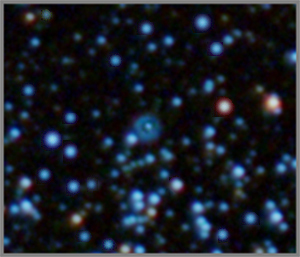ARCHIVE 2022 |
SInce 7th January 2022 we are now located in Norfolk. I eventually decided not to rebuild the observatory and simply things down. So out went the RCOS Ritchey-Chretien, the Takahashi FSQ106 and the Paramount. All gone to good homes. I started with an unguided tracker and then moved onto a Skywatcher Adventurer, initially unguided and then guided in RA. It has no DEC drive. The imaging was all done from my front garden - this has the best aspect. We are located 7 miles north of Norwich so there is light pollution to the south. This is not ideal but not as bad as lancashire. Unfortunately although Norfolk is one of the driest counties in the UK so far winters have been quite poor for astronomy.
|
|
|
|
16th December 2022The Veil Nebula |
I had been reaching the limit with unguided images so when a Star Adventurer came up for sale at I price I could not refuse I took the plunge. This has a guiding option for RA only but that would increase the length of exposures that would result in round stars. A SVbony 30mm guide scope and ZWO ASI120mm-mini camera now provides the guiding - well just in RA. The full Veil Nebula, at around 3 degrees across, is too big for most telescopes and a moderate length camera lens is ideal. What we see today is the remnants of a supernova explosion that took place around 10,000 to 20,000 years ago, which is still imprecise and it is surprising a better age estimate has not emerged. Its distance is however now known with a bit more accuracy at around 2400 light years according to wiki. The star that exploded was around 20 times more massive than the Sun. The colours visible are due to Hydrogen (red) and Oxygen (blue/green).
|
|
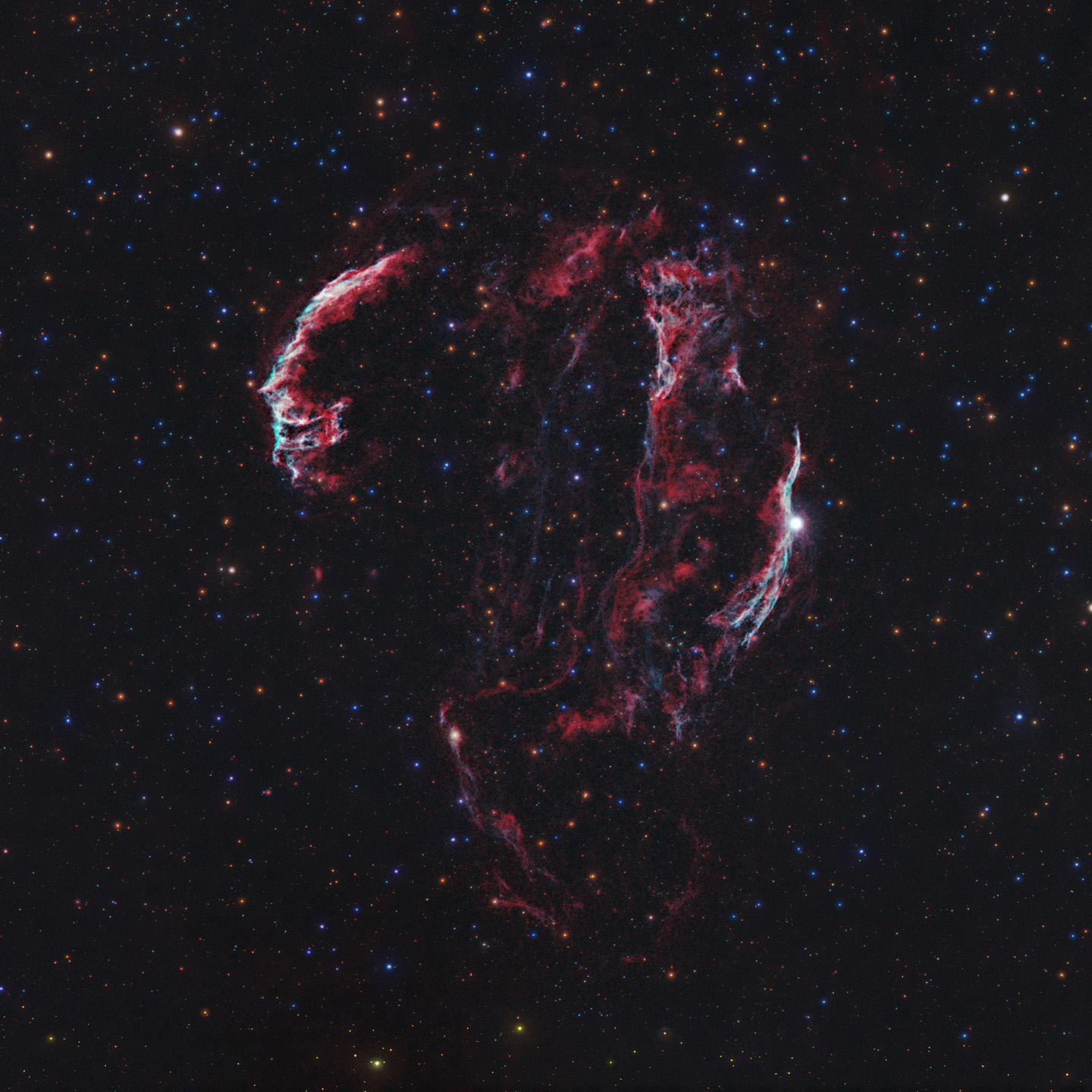 |
Veil Nebula
|
|
1st December 2022Northern Milky Way Mosaic - Cygnus to Cassiopeia |
I was planning to do much more coverage but the clouds rolled in - as they often do in Norfolk - so just two frames. Prominent in this mosaic are the constellations Lyra , Cygnus, Cepheus and Cassiopeia (right to left). The Andromeda Galaxy ,M31, is visible at the left corner. It has recorded very yellow which I recall was the colour is was portrayed in the first ever colour picture of this galaxy many many years ago.
|
|
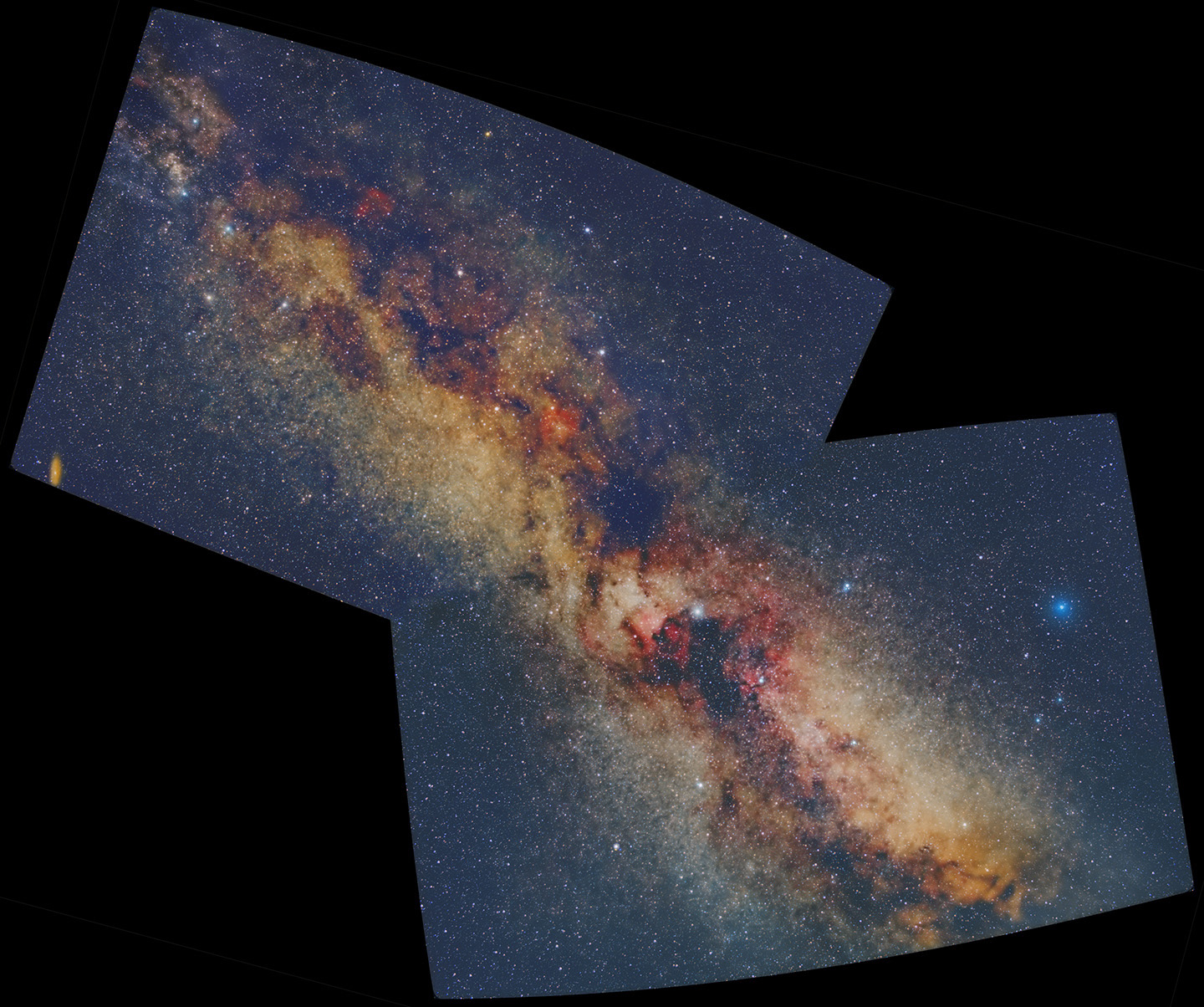 |
Milky Way Mosaic
|
|
23rd November 2022Southern Cepheus H-alpha Mosaic |
Following on from my IC1396 and Flying Bat image (see below), I decided to extend the h-alpha coverage futher north and east. It does appear (at least to me) as one gigantic emission nebula. As well as the Elephant's Trunk (in IC1396) and the Flying Bat Nebulae also recorded in this frame are the Wizard, Cave and Bubble Nebulae plus of course several less famous deep-sky objects. Note as this is purely h-alpha the Squid Nebula is invisible.
|
|
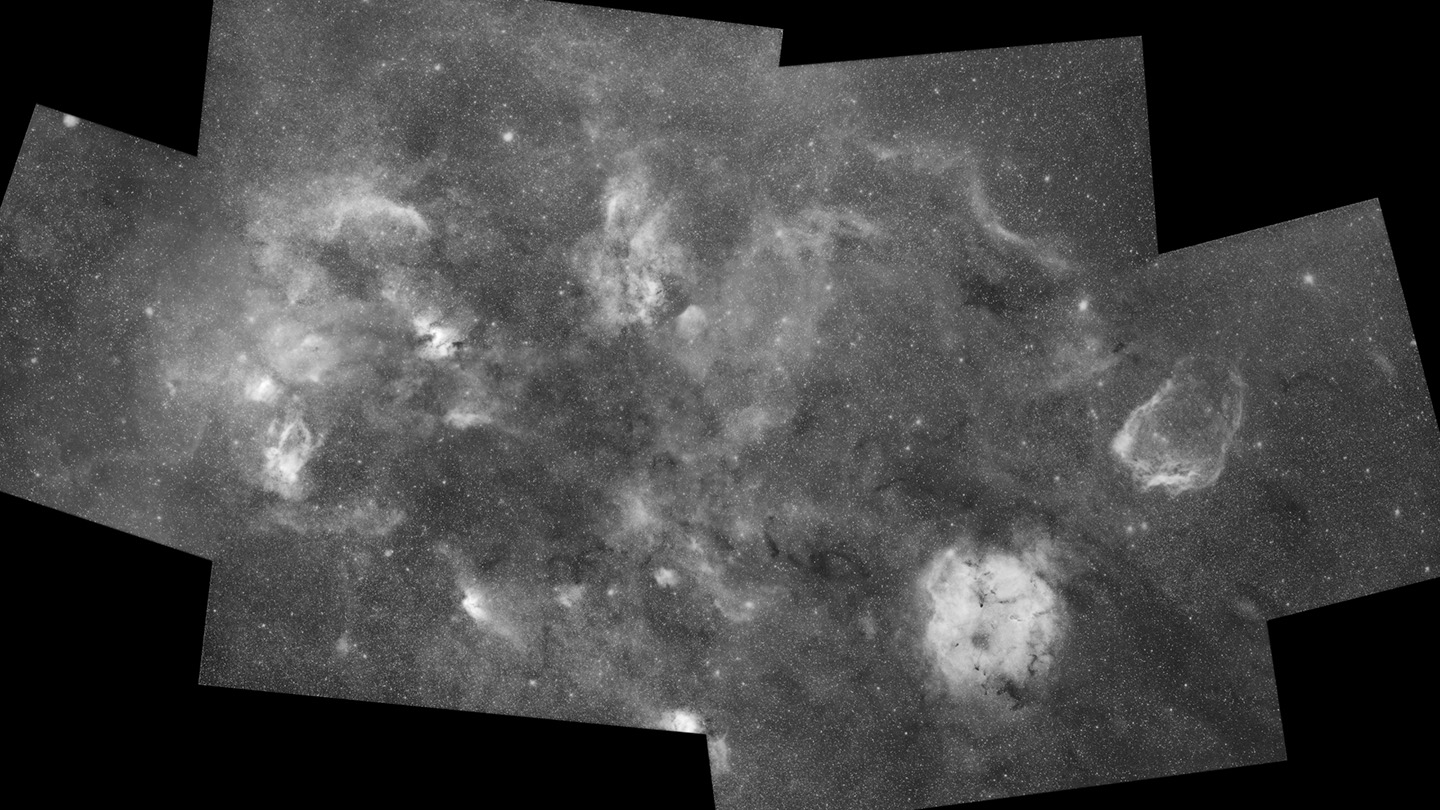 |
Cepheus Mosaic
|
|
7th November 2022IC1396 (Sharpless 131) & Flying Bat/Squid Nebulae (Sharpless 129) |
Sharpless 129: A complex object that began life as a H-alpha emission nebula recorded by Sharpless in 1959. This is commonly now known as the Flying Bat Nebula. However, in 2011 French amateur astrophotographer Nicolas Outters noticed an additional object lying within the bounds of Sharpless 129 recorded only in an OIII narrowband image. This is now commonly called the Squid Nebula but officially it is Ou4 after its discoverer. OIII nebulae are typically planetary nebula and this has the appearance of a bi-polar type. There is a hot blue star (actually a triple system HR 8119 ) at its centre adding weight to this probable conclusion. Sharpless 131: This very large emission nebula in southern Cepheus contain the famous Elephant's Trunk Nebula (NGC 1396A) . It is around 2400 light years away. The Elephant's Trunk is a dark gas and dust region that is being eroded away by hot young stars within the main nebula.
|
|
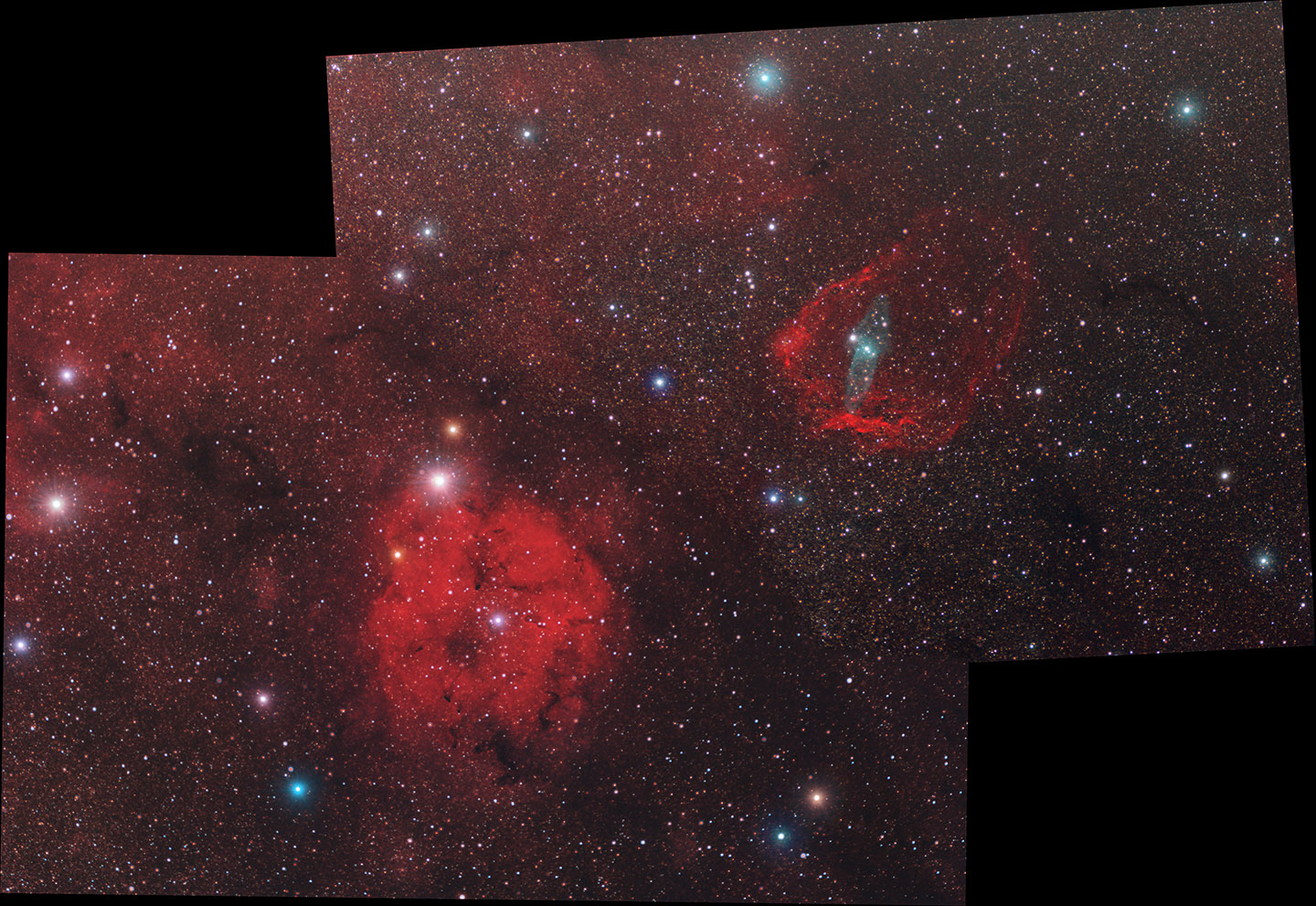 |
Southern Cepheus Deep-Sky Objects
|
|
30th October 2022North American Nebula |
This giant emission nebula (HII) is known as the North American Nebula because of its very obvious resemblance especially as it has a prominent "Gulf of Mexico". To its right (west) is the Pelican Nebula - the two forming Sharpless Sh2-117. Thanks to the GAIA space observatory we at long last have an accurate distance to these nebulae. Gaia was able to measure the precise distance to 395 stars lying within the HII region, giving the North America and Pelican nebulae a distance of 2,590 light years. The entire HII region is estimated to be 140 light years across, and the North America nebula stretches 90 light years north to south. (ref. Wiki)
|
|
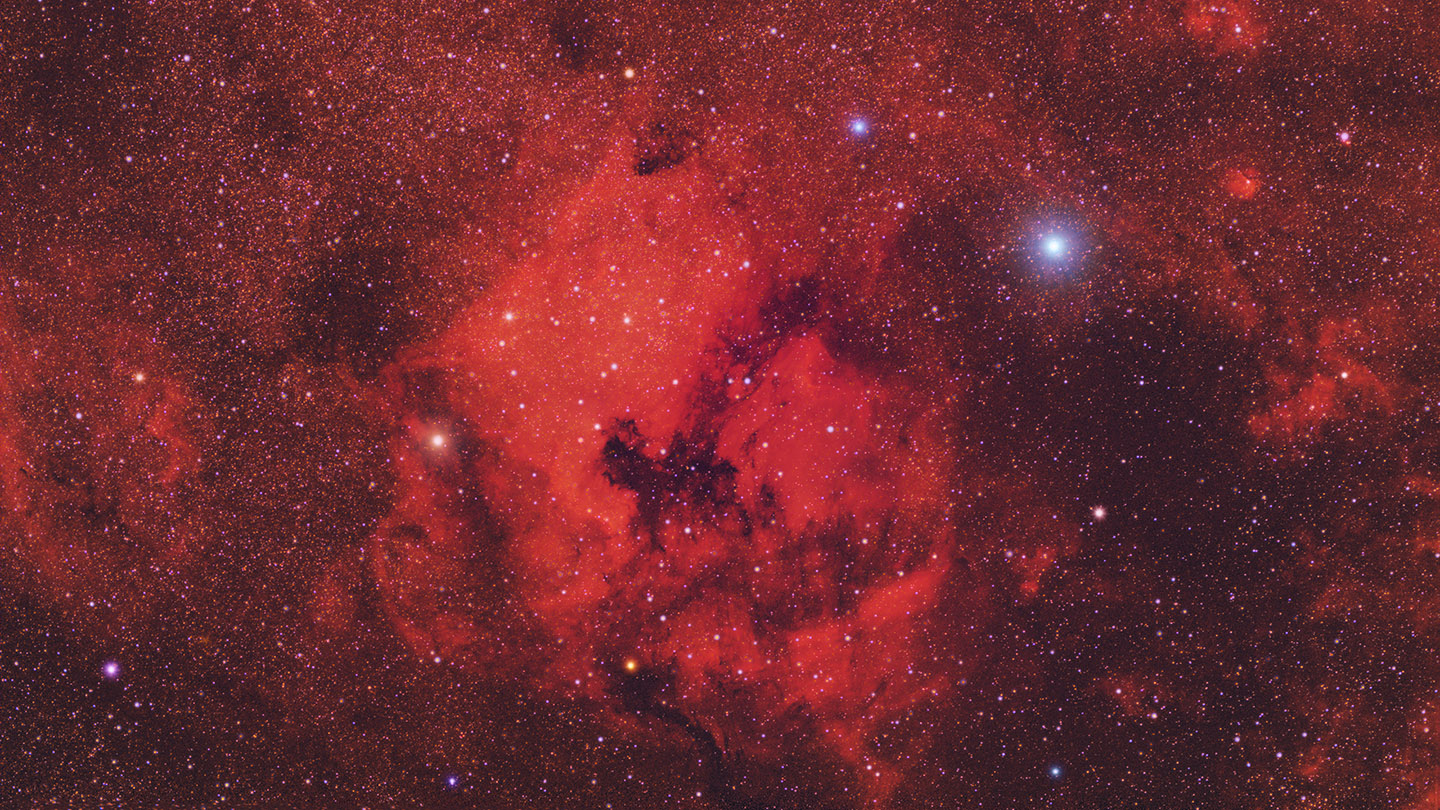 |
North American Nebula
|
|
25th October 2022Partial Solar Eclipse - 25th October 2022 |
For once the weather smiled and here in Norfolk we had just a few hazy clouds covering the Sun. The image was taken well after maximum after we had enjoyed a very good viewing session. Note the sunspot group at 4:00 o’clock – this is about the size of the earth! There a couple of other less obvious sunspots - more towards the middle and down a bit. Also if you look closely at the edge of the Moon it is a bit jagged due to its mountains and craters. The solar ganularity is also evident.
|
|
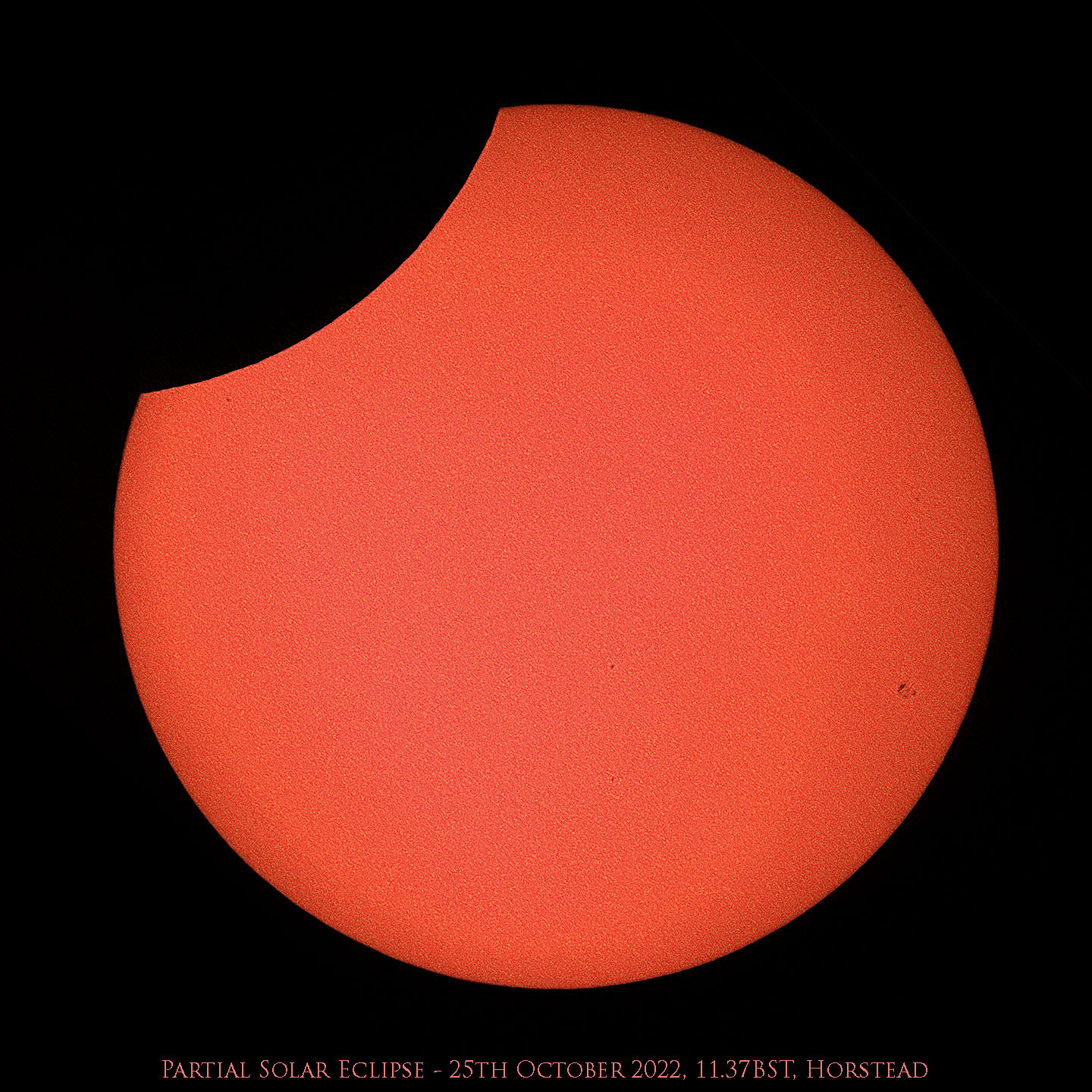 |
Partial Eclipse 2022
|
|
23rd October 2022Northern Cygnus in H-alpha (3 panel mosaic) |
It began as test of a Hydrogen alpha filter with the Samyang lens on the North American Nebula in Cygnus and expanded as interesting features both north and south were evident. Because I was using a narrowband filter I stopped the lens down to f/3.5 as these filters do not like steep light cones passing through them. Deneb is the brightest star (right of centre) in my view and is where the Great Rift begins and heads south towards where the centre of the galaxy lies. Not a rift at all but a series of dark molecular clouds in the plane of our galaxy that blocks our view and appears to divide the Milky Way in two. Under darks skies it is obvious to the naked eye. However, most prominent in this image is the giant emission nebula (HII) commonly known as the North American Nebula - complete with the "Gulf of Mexico". To its right (west) is the Pelican Nebula - the two forming Sharpless Sh2-117. Thanks to the GAIA space observatory we at long last have an accurate distance to these nebulae. Gaia was able to measure the precise distance to 395 stars lying within the HII region, giving the North America and Pelican nebulae a distance of 2,590 light years. The entire HII region is estimated to be 140 light years across, and the North America nebula stretches 90 light years north to south. (ref. Wiki)
|
|
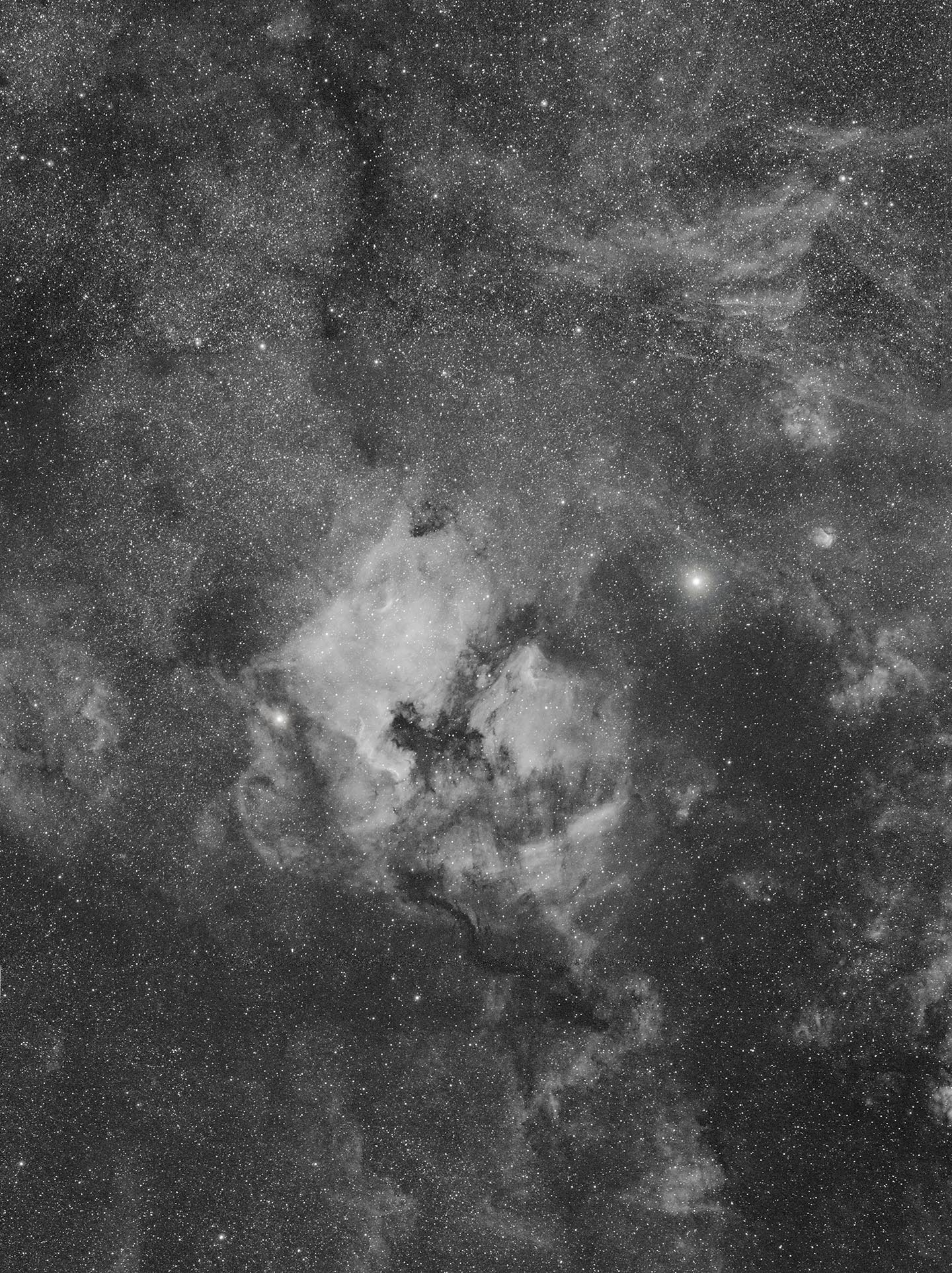 |
Northern Cygnus in H-alpha
|
|
16th October 2022Open Clusters IC4756 & NGC6633 |
IC 4756 is a bright and very large, well over half a degree, open cluster in the constellation Serpens. Known as Graff's Cluster, it is bright enough to be easily seen in binoculars and is a bit too large for most telescopes. It is seen best in (image stabilised) binoculars and forms a bright pair with NGC663. It is surprining it was not included in either the Messier or Caldwell catalogues. IC4756 is probably one of the most (professionally) studied open clusters with several papers covering its stars and their chemical properties e.g. Chemical composition of giant stars in the open cluster IC 4756 by Bagdonas1 et al., 2018. Its age is around 800 miliion years and at a distance of approximately 1500 light years, although some estimates place it further. NGC 6633 is just over the boundary in the constellation Ophiuchus. Discovered in 1745-46 by Philippe Loys de Chéseaux and rediscovered by Caroline Herschel in 1783. It was included by her brother William in his catalogue as H VIII.72.
|
|
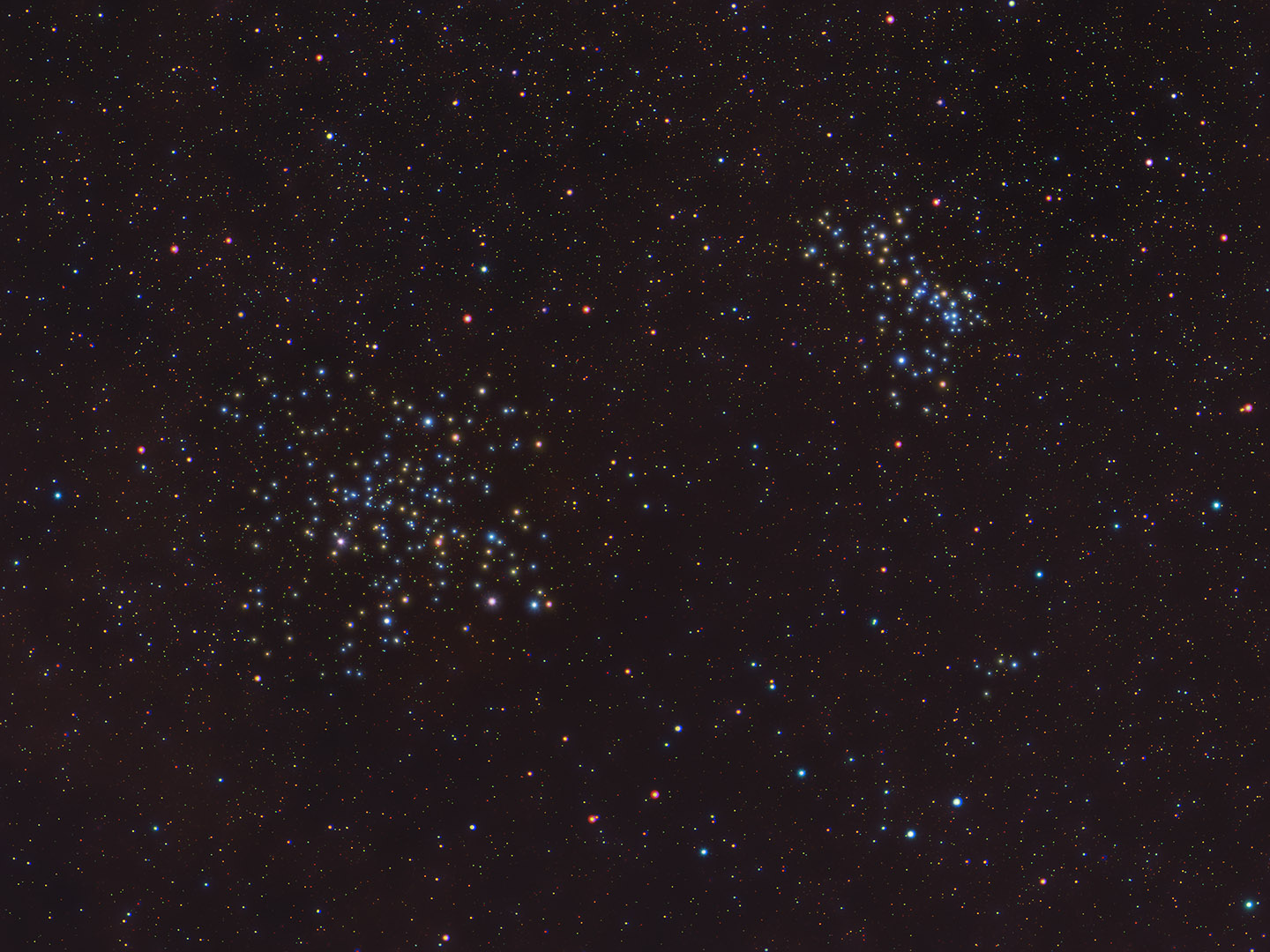 |
IC4756 and Ngc6633
|
|
9th October 2022Sagitta Constellation & M71 |
Sagitta is one the few constellations that is small enough for the 135mm lens to fit it in - well the bright stars of the constellation if not its full extent. It wasn't the best of nights and I lost several frames to passing clouds. Sagitta is a dim but distinctive constellation in the northern sky not to be confused with the bigger and more spectacular Sagittarius. Sagitta is Latin for 'arrow'. One of the original 48 constellations listed by Ptolemy. It needs a dark sky to see it clearly as it has no star brighter than 3rd magnitude. Although overlying the Milky Way it is located in the "great rift" which is where dust clouds obscure the view so not a spectacular background. The most famous deep-sky object within it is Messier 71. For many years there was great confusion and debate as to whether this cluster was a open type or a globular. It is now accepted to be a very loose globular cluster at a distance of about 13,000 light-yearswith a mass of around 53,000 Suns. It was the detection of a short "horizontal branch" in the H-R diagram, which characterises globular clusters, that resolved the issue. The shortness of the branch means it has a lack of RR Lyrae variables normally expected in globulars. M71 is relatively young for a globular at 9–10 billion years. My M71 image (right) was shot 20 years ago with a 0.25 megapixel (512x512) camera - how things have advanced!
|
|
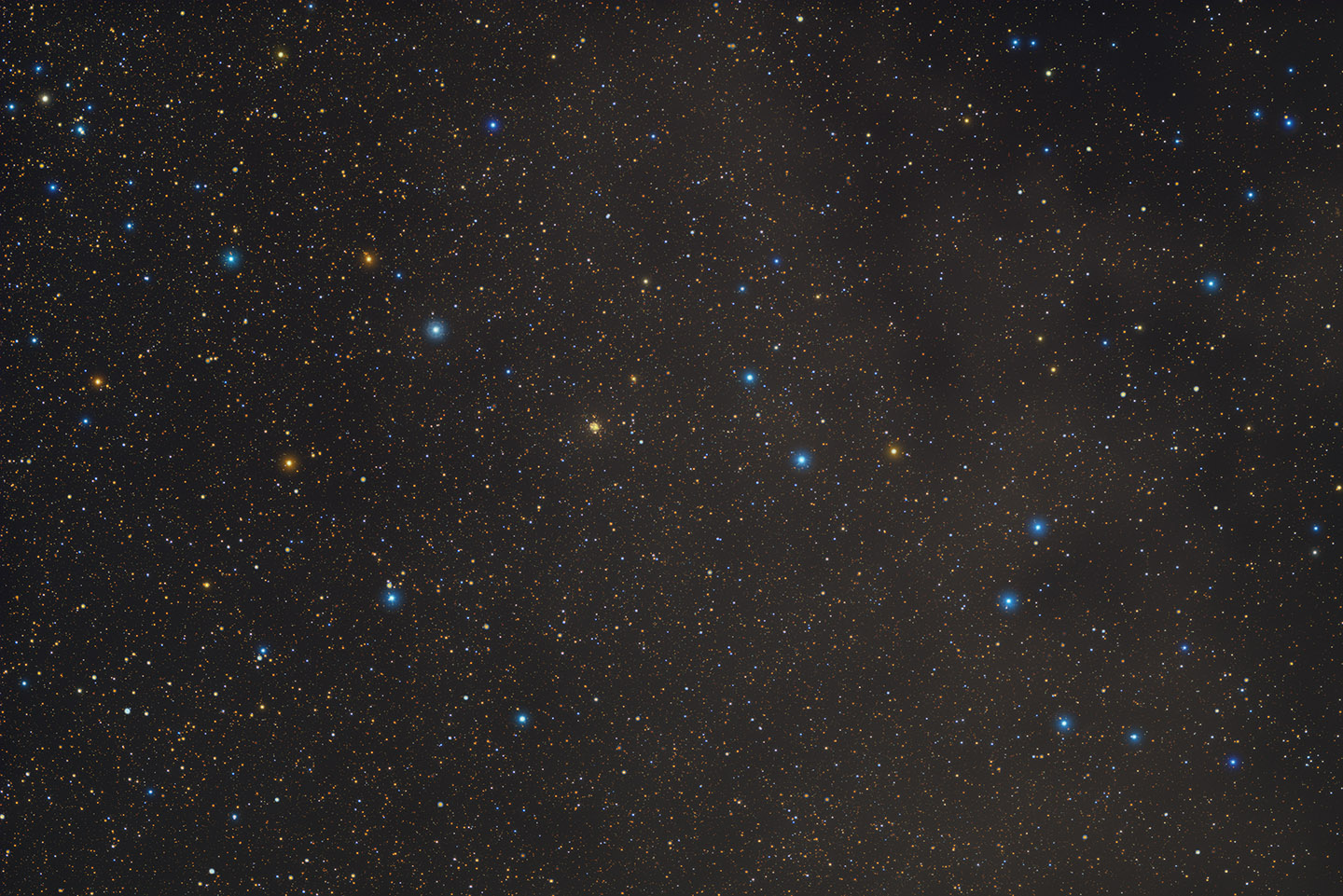 |
Sagitta Constellation
|
|
4th October 2022The Wild Duck Cluster & the Scutum Star Cloud |
We had a very untypical month of cloudy weather which meant September was totally clouded out. Fortunately this changed in October and I was able to try out my new (to me) Samyang 135mm lens and Canon 250D camera. This lens has an awesome reputation for astromomy being supposedly perfectly useable wide open at f/2. I must I admit I did not believe this but I was proved wrong. It is pin sharp in the corners at f/2 - well at least on my APS-C camera. The main image below was shot with the Samyang and as this target is very low from Norfolk, plus south is straight at Norwich for me, I decided to use just 30 second exposures. It turned out to be about right for f/2. M11, the Wild Duck Cluster, is just left of the Scutum Star Cloud. This area of the Milky Way is renowned for the number of Barnard Dark Nebulae (B numbers) with very little H-alpha clouds present. In other words a very dirty and dusty region of our galaxy. Middle bottom edge is Globular Cluster NGC 6712. One object I could not identify is what looks like a faint blue nebula about 3/4 up and left of centre. One issue with shooting at f/2 is the problem with narrowband filters and the steepness of the cone of light. It could well be I will have to stop down when using a filter. The image right was shot several years ago with a Takahashi at 525mm focal length so shows much more detail.
|
|
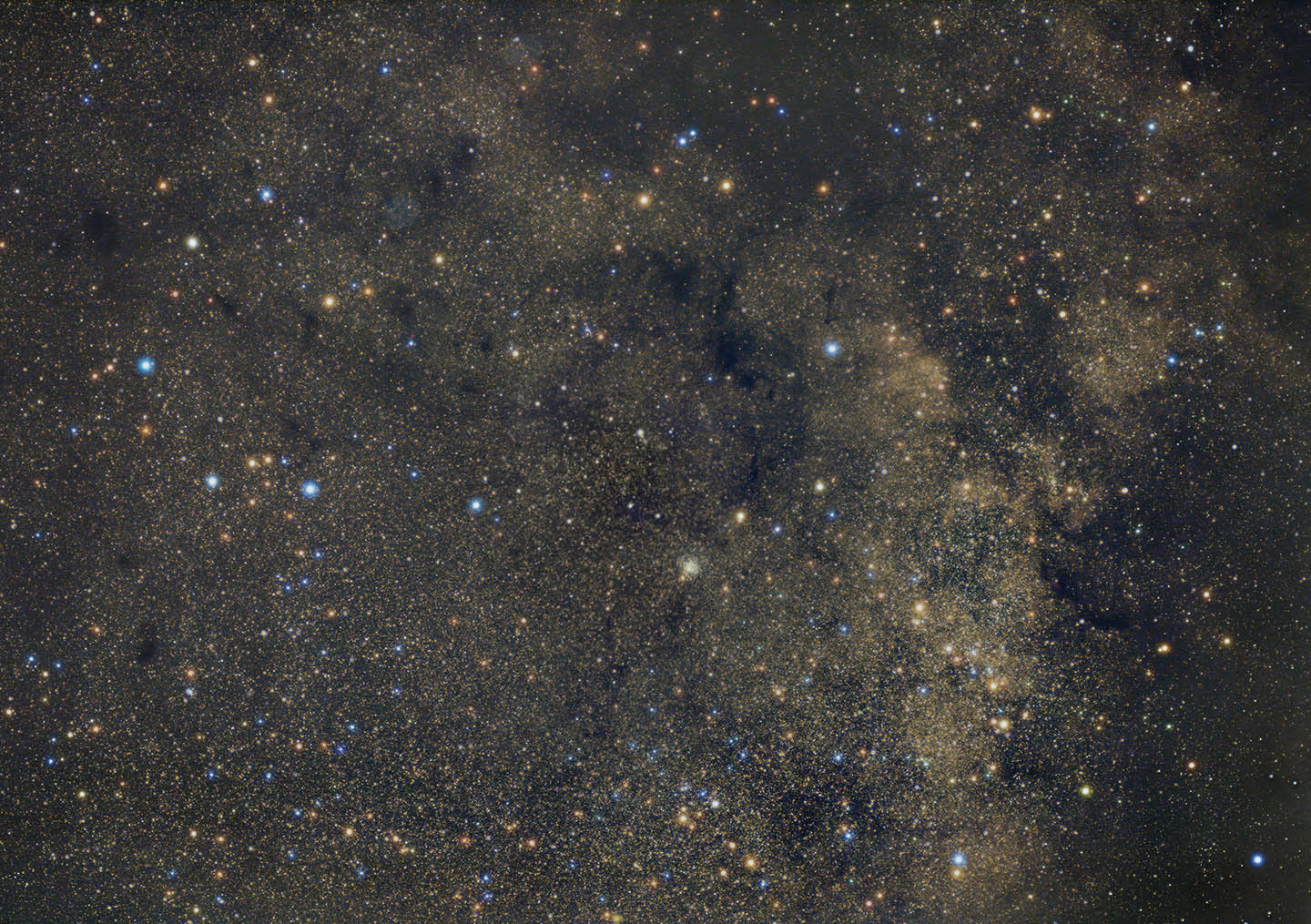 |
Wild Duck Cluster
|
|
12th August 2022Hercules Constellation (with Lyra & Corona Borealis) |
A much better cloud-free night and this time I stopped the Canon 24mm lens down to f/5 for better stars in the corners - it seems to have worked. Hercules was the Roman mythological hero adapted from the Greek hero Heracles. Hercules was one of the 48 constellations listed by the second-century astronomer Ptolemy. However, today its four relatively bright stars namely: Pi, Eta, Zeta and Epsilon Herculis are commonly known as the Keystone Asterism. Perhaps it is a the modern lack of truly dark skies that makes this asterism stand out. This trapezoid-shaped pattern makes it easy for observers to locate the great globular cluster M13. One of the showpieces of the summer sky for amateur astronomers, the great globular cluster M13 never fails to disappoint. The number stars within it has varied over the years from 1 million to 100,000 but today somewhere in between is the accepted number ie several 100,000s. It was discovered by Edmond Halley in 1714, and Charles Messier added it to his list of objects not to mistake for comets - the Messier Catalogue.
|
|
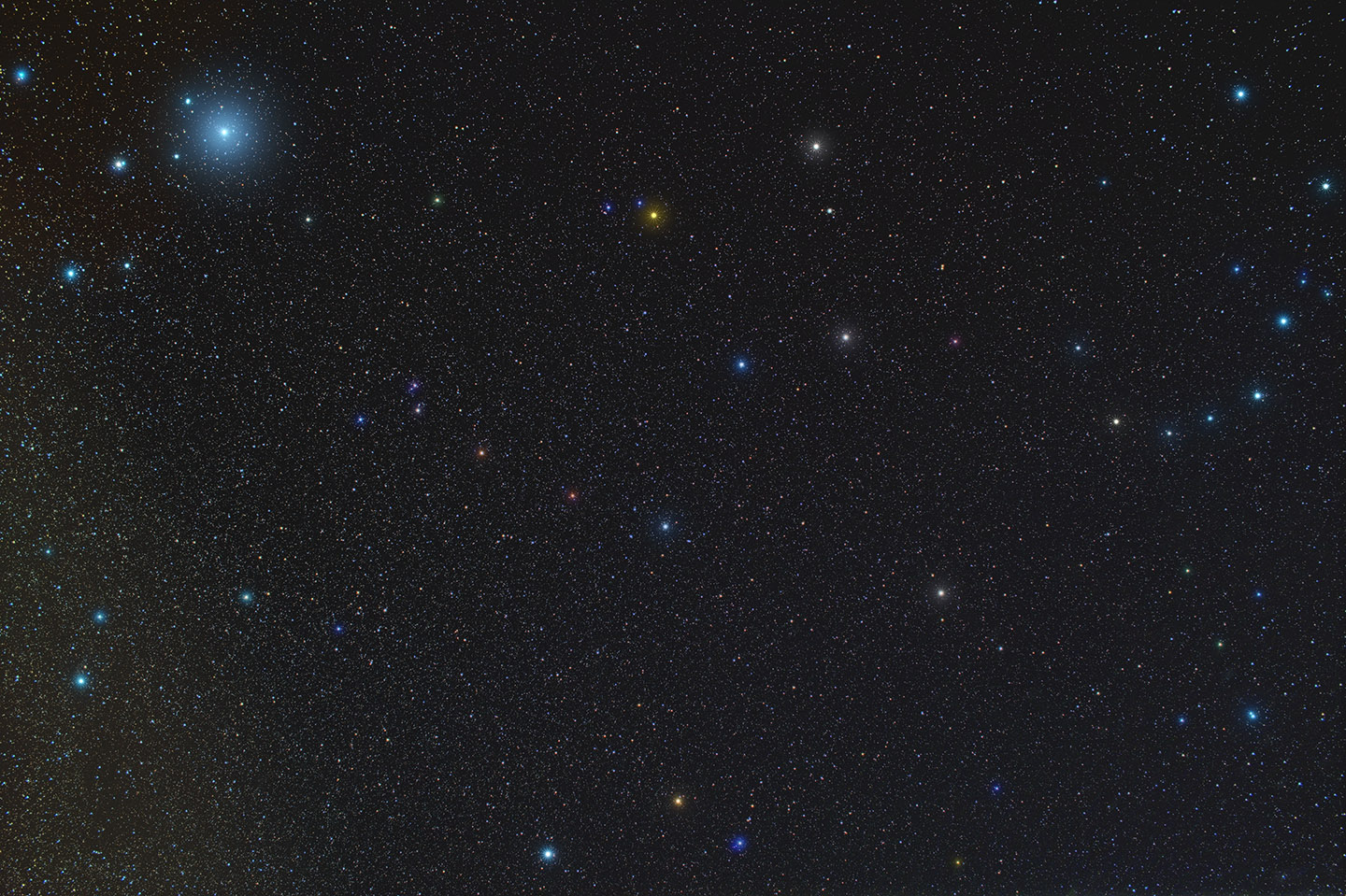 |
Hercules
|
|
21st July 2022Stephan's Quintet |
I couldn't resist digging out my old image of Stephan's Quintet to see how it compares to the billion-dollar James Webb Telescope. Obviously we see different features due to the different wavelengths used. Probably the biggest difference is the foreground galaxy (left) which in the visible has blue spiral arms but these are invisible in the infra-red. It should be pointed out in all fairness that at the wavelengths the James Webb is viewing then resolution is much lower. I recall reading somewhere at mid infra-red it has the same resolution as an 8-inch telescope in the visible. |
|
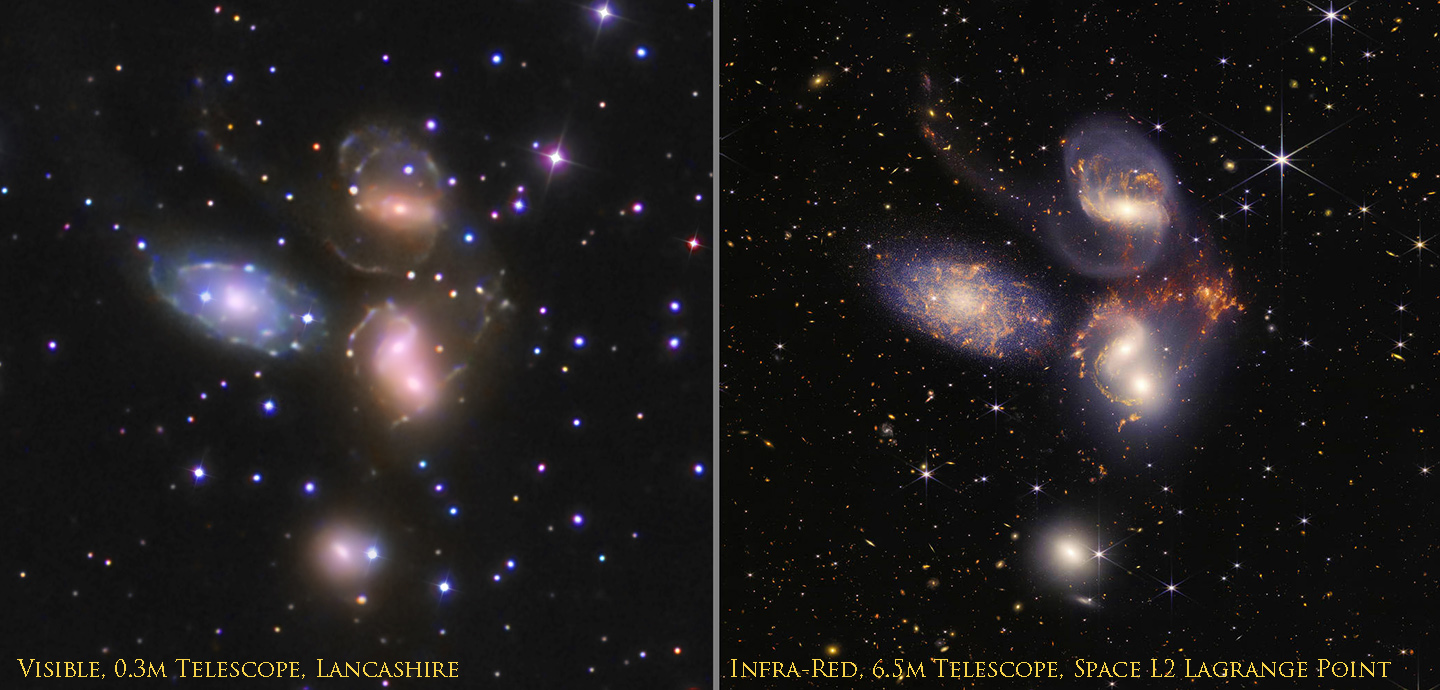 |
Stephan's Quintet
|
|
1st July 2022Virgo Constellation |
In the UK Virgo is always low in the sky and not seen at its best but is easy to spot in spring thanks to its bright star Spica. Spica is a close binary star whose components orbit each other every four days classed as a spectroscopic binary although with an interferometer the pair can be separated. My image of the constellation was thwarted by numerous passing clouds and I was surprised that anything presentable emerged - only due to the power of sigma clipping. As regards deep-sky objects is of course famous for the Virgo Galaxy Cluster which spreads into Coma Berenicesas well. and Virgo. Close to the centre is the giant M87 elliptical galaxy with its supemassive black hole that has recently been "imaged" by the Event Horizon Telescope. However, I have chosen to show here probably the most obscure of Virgo's deep-sky objects namely Zwicky's Necklace (8 Zw 388), a group of extremely remote galaxies (right). Despite being known for over 50 years there is virtually no data available for it - even the NASA/IPAC Extragalactic Database still has zero infomation. However, we do know Zwicky's Necklace comprises 10 to 12 galaxies arranged in an usual shape with magnitudes from 18 and fainter. Its distance is unknown but on the basis of its brightness it must be of the order of 1 billion light years distant - perhaps more.
|
|
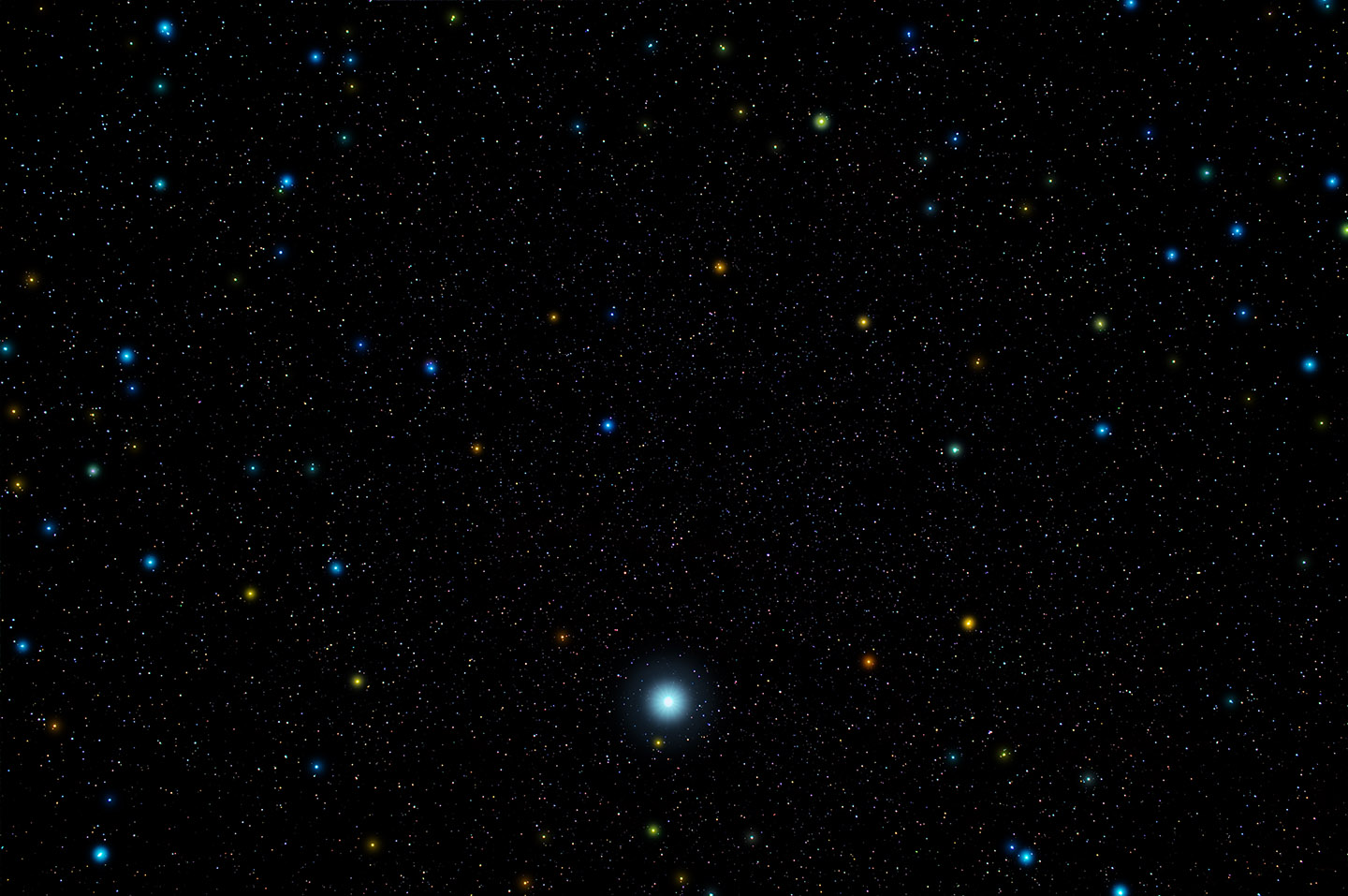 |
Virgo
|
|
23rd June 2022Corona Borealis Constellation |
One of Ptolemy's original constellations and one that looks like its name ie Northern Crown. There are no bright deep-sky objects in the constellation but visible in the top left corner is the giant globular cluster M13 in Hercules. Towards the bottom of my image actually in Sextans is a famous group of interacting galaxies, Seyfert's Sextet (right) - see below for details and right for my image. Seyfert's Sextet is a group of galaxies about 190 million light-years away although it would appear it is really should be called Seyfert's Quartet - just 4 galaxies are associated. One of the 6 galaxies, NGC 6027d, is a background object and another "galaxy," NGC 6027e, is actually a part of the tail from galaxy NGC 6027. The 4 associated galaxies will eventually merge to form probably a single giant elliptical galaxy.
|
|
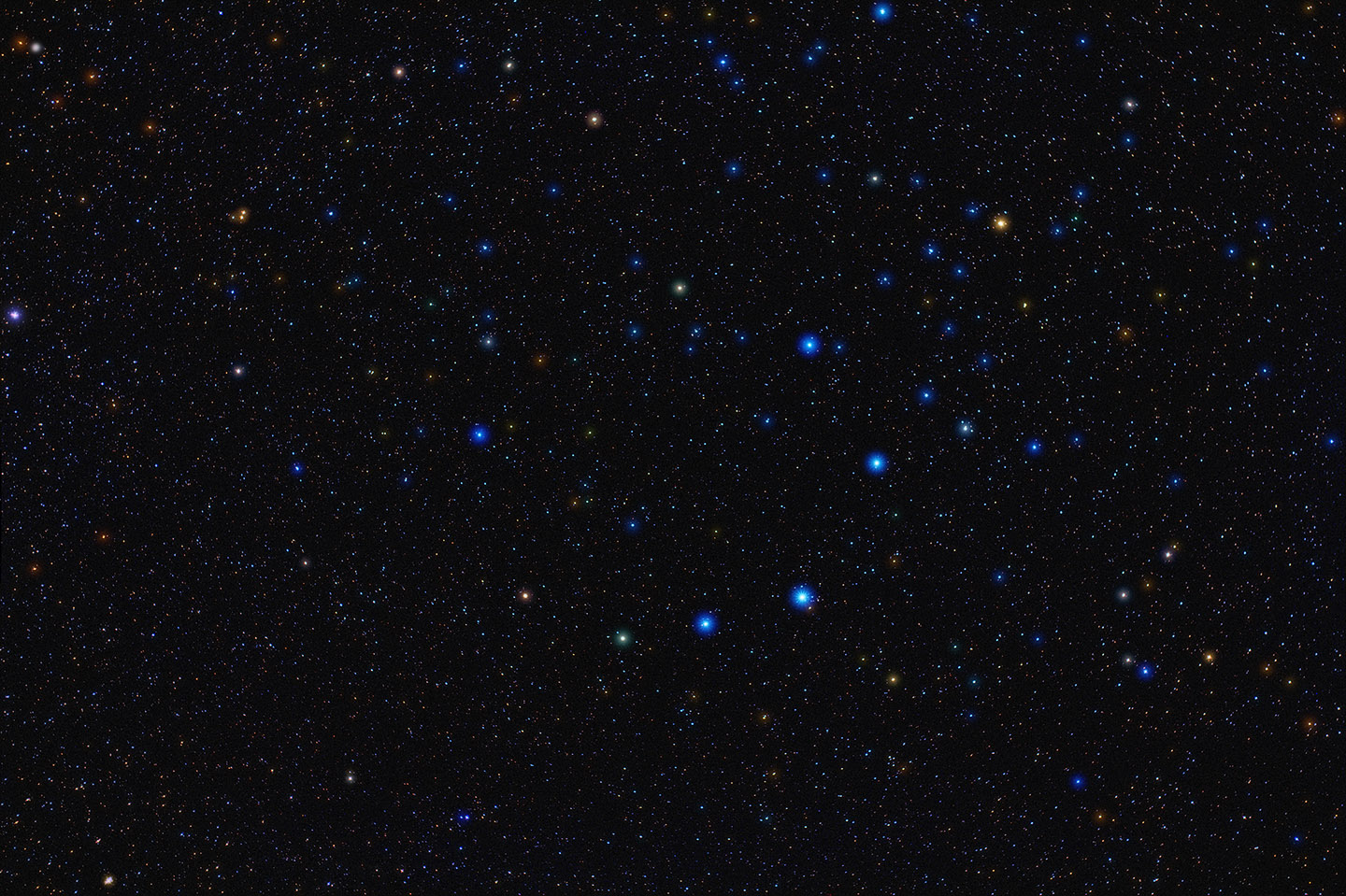 |
Corona Borealis
|
|
12th June 2022Bootes Constellation |
At last one of Ptolemy's original 48 constellations! It is of course dominated by the orange giant Acrturus, the fourth-brightest star in the night sky. Bootes is latin for the 'herdsman' or 'plowman' (literally, 'ox-driver'. Ptolemy depicts him with 2 hunting dogs - now the separate constellation of Canes Venatici. Epsilon Bootis, Izar, is a popular triple star although double only in most scopes. Its brightest galaxy is NGC 5248 (Caldwell 45). Originally classed as an Sc spiral galaxy (e.g. similar to M33) it has been re-classified as SAB(rs)bc, meaning it has a small bar. Viewed not quite face-on, it has a very bright extended core (hiding the bar) and two bright main spiral arms. It is a member of a small group of galaxies and part of the Virgo III Grouping strung out to the east of the Virgo Supercluster of galaxies. Distance measurements to NGC 5248 are somewhat variable varying from 35 million light-years to 74 million light-years. The latest measurements I could find were from 2014 giving a distance of 35-38 million light years.
|
|
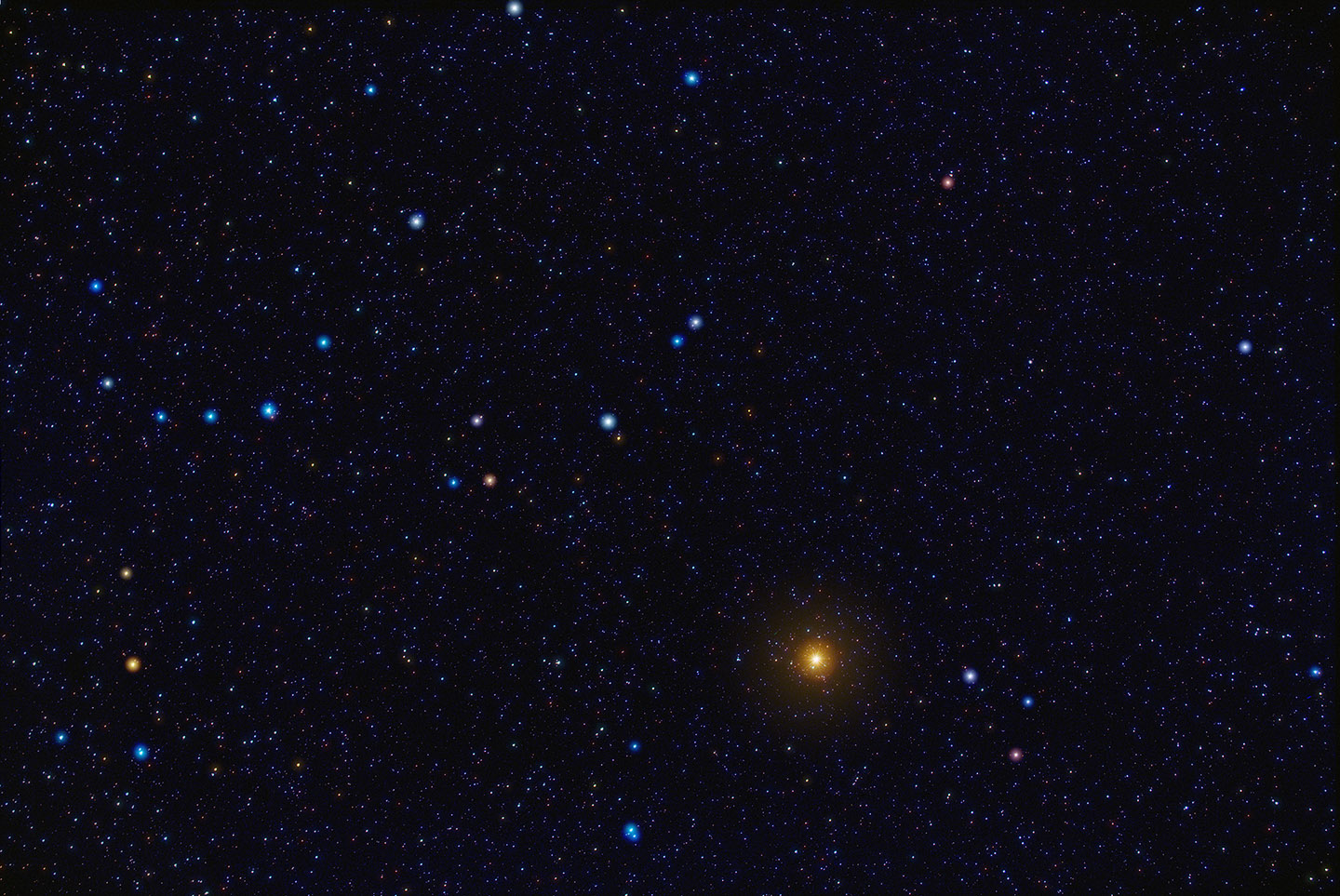 |
Bootes
|
|
1st June 2022Canes Venatici Constellation |
Yet another constellation added by Hevelius in 1687 although it was known to to the ancients including Ptolemy. Canes Venatici is Latin for hunting dogs, and the constellation is often depicted in illustrations as representing the dogs of Boötes the Herdsman, the constellation to its south. Canes Venatici has 2 main stars, the double star Cor Caroli is the constellation's brightest star (left) at mag 2.9. Beta CVn (right) is a yellowish main sequence star of mag 4.2 ). Possibly the most interesting star though is "La Superba" (Y CVn) as it is one of the reddest naked-eye stars and one of the brightest carbon stars (centre towards top). There are several prominet galaxies in the constellation but the Whirlpool Galaxy is the most famous and was the first galaxy whose spiral form was observed in 1845 by Lord Rosse at Birr Castle, Ireland. Possibly the most imaged galaxy but no excuses needed for including it here. Named the Whirlpool Galaxy for obvious reasons. It is around 30 million light-years from Earth with an estimated diameter of 76,000 light-years. The distorted spiral structure is the result of the close interaction between it and its companion galaxy NGC 5195 (top, north), which is in effect orbiting M51. About 500 to 600 million years ago it passed from behind and below M51 and then passed in front of M51 before passing through the top edge of M51 about 50 to 100 million years ago. It now lies somewhat behind M51 hence the dust lane of M51 appearing in front of NGC 5195. My image right was a combination of images taken in 2009 and 2020.
|
|
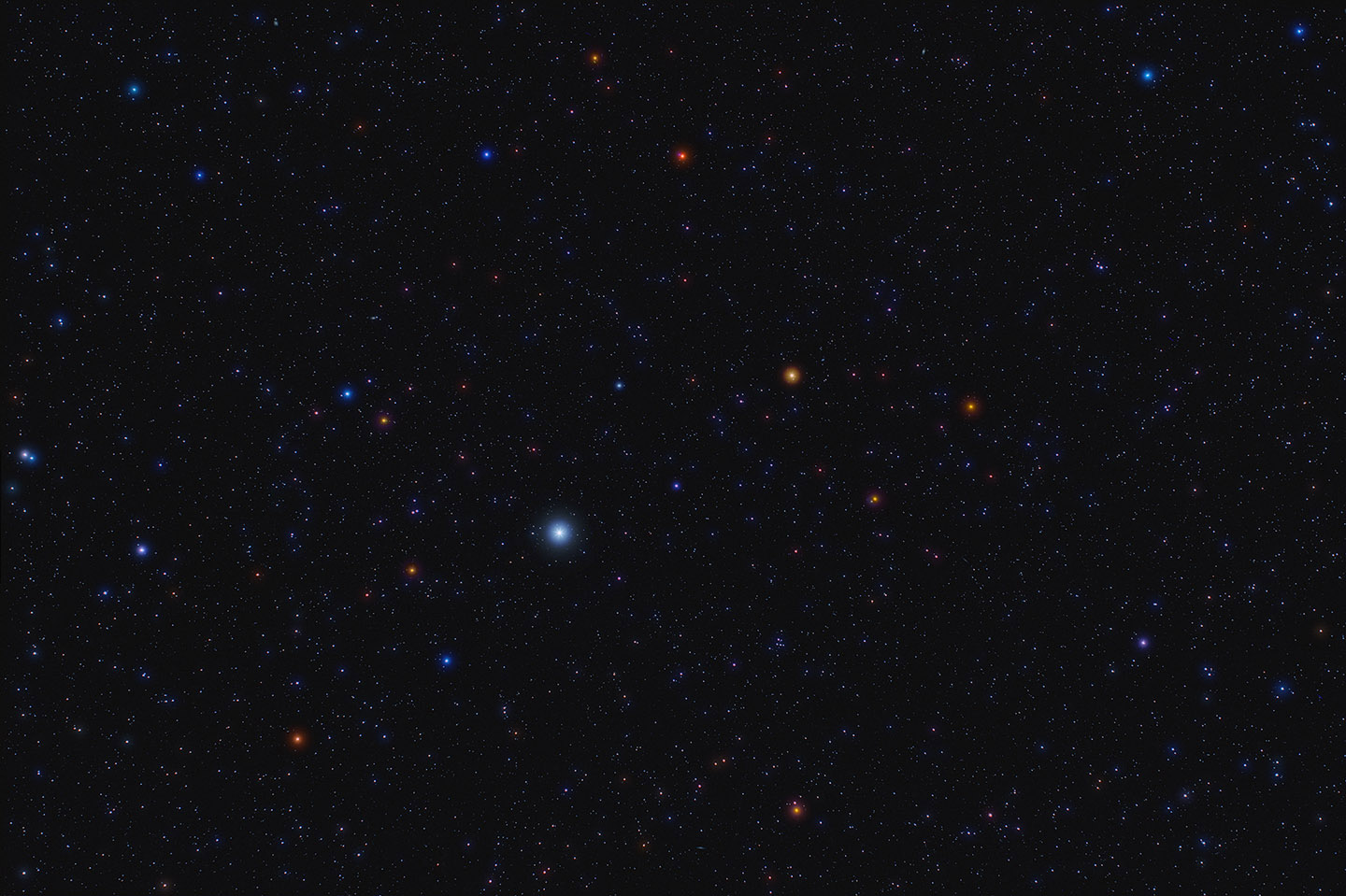 |
Canes Venatici
|
|
19th May 2022 |
Corvus & Crater from Norfolk
These southern hemisphere constellations are very low form the UK and I was pushing my luck aiming directly over Norwich. Consequently there was a lot of light pollution to deal with as well foreground trees. Obviously the trees were blurred in the sequence of images so an unblurred one was added over. Corvus (The Crow) is on the left and Crater (The Cup) on the right. On the border of Corvus and Virgo is the famous Sombrero Galaxy, M104. Because its centre is so bright and normally over-exposed, I used a combination of 5 minute and 15 minute exposures to achieve the necessary high dynamic range when I took the image to the right. Despite being obviously a spiral galaxy with a very prominent dust lane tilted just 6 degrees from exactly edge-on, M104 does share some features with elliptical galaxies. Namely it has a huge central halo, an active galactic nucleus with a supermassive black hole of around 1 billion solar masses and a large retinue of globular clusters (2000). It is classed as LINER (low ionization nuclear emission region) galaxy. Its distance is around 30 million light years and seems to located somewhat on its own rather than part of a group. All in all - a very untypical spiral galaxy and the presence of an UCD (Ultra Compact Dwarf) only addsto its uniqueness - see my 2013 page for details.
|
|
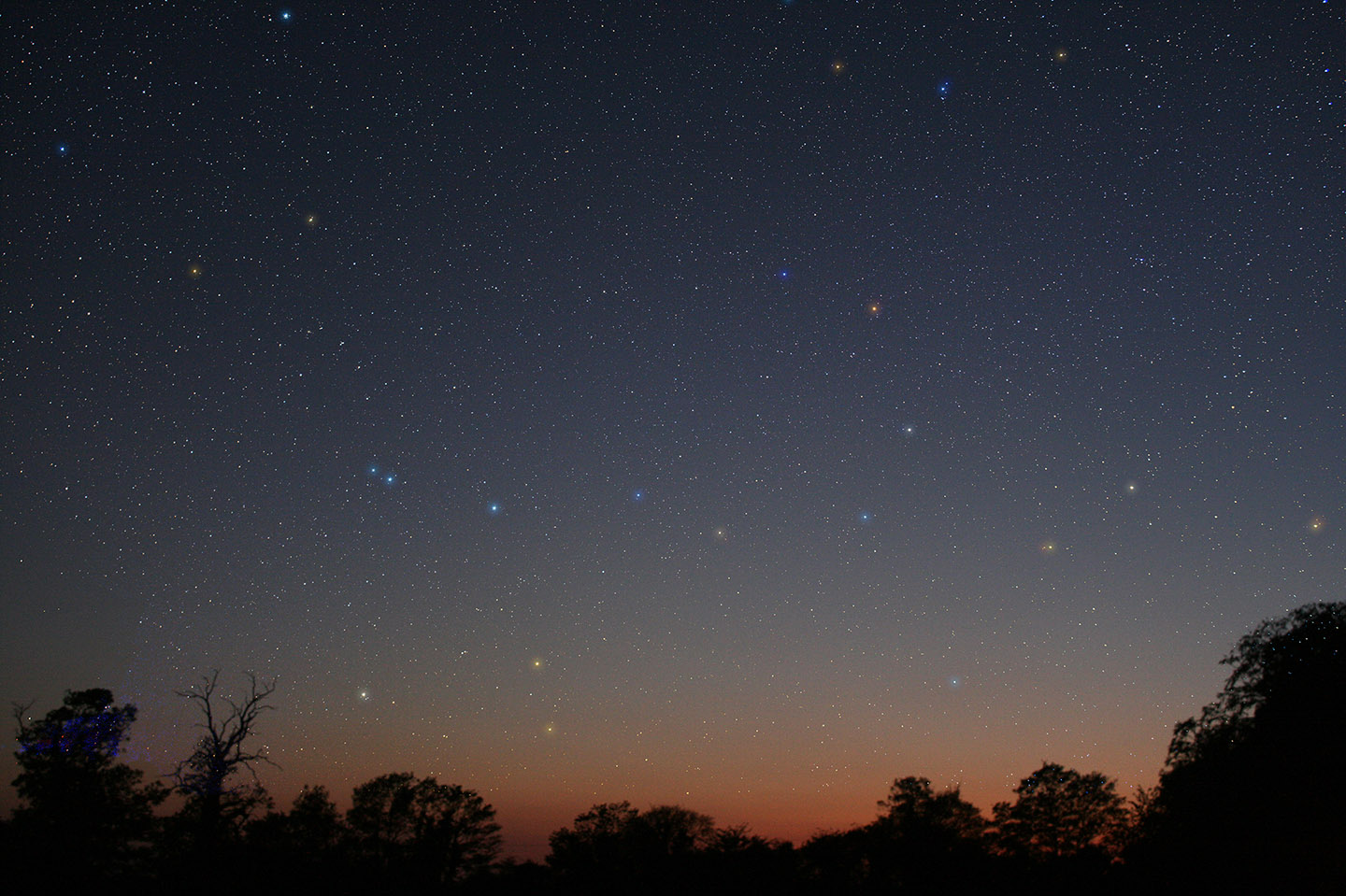 |
Corvus and Crater
|
|
11th May 2022Coma Berenices Constellation |
Known to the ancients more as an asterism than a constellation. Tycho Brahe included it in his 1602 star catalogue as a constellation. Brahe recorded 14 stars in the constellation, Hevelius increased this to 21, and John Flamsteed to 43. The Coma Star Cluster (Melotte 111, Collinder 256) is a small but nearby open cluster located in the constellation. It contains about 40 brighter stars (between magnitudes 5 and 10) with a common proper motion. This is the mythological Berenice's Hair. As well as the star cluster, Coma Berenices contains one galactic supercluster (right and see later), two galactic clusters, eight Messier objects and the famous edge-on galaxy NG4565 (right). This was missed by Messier but is bright enough to be visible in the constellation image below (left of the star cluster). However, Coma Berenices has lent its name to the famous Coma Galaxy Cluster (Abell 1656), which is more than 350 million light years away (right). At the cluster core are two giant elliptical galaxies, NGC 4889 (right) and NGC 4874 (left). These two dominate a very rich cluster of around 1000 galaxies. The cluster is nearly spherical and consists mostly of elliptical (many highly-flattened) and dust free SO type galaxies. In a recent study of redshifts in the cluster (Colless & Dunn, 1996) found evidence for the cluster to be a merger of two clusters, one each centred on NGC 4889 and NGC 4784. There is even evidence for other sub-concentrations centred on other massive galaxies in the cluster (Gurzadyan & Mazure, 1998). Backing up this merger(s) hypothesis, Trentham & Mobasher (1998) found evidence in the form of giant stellar debris that could have resulted from damaging galaxy collisions.
|
|
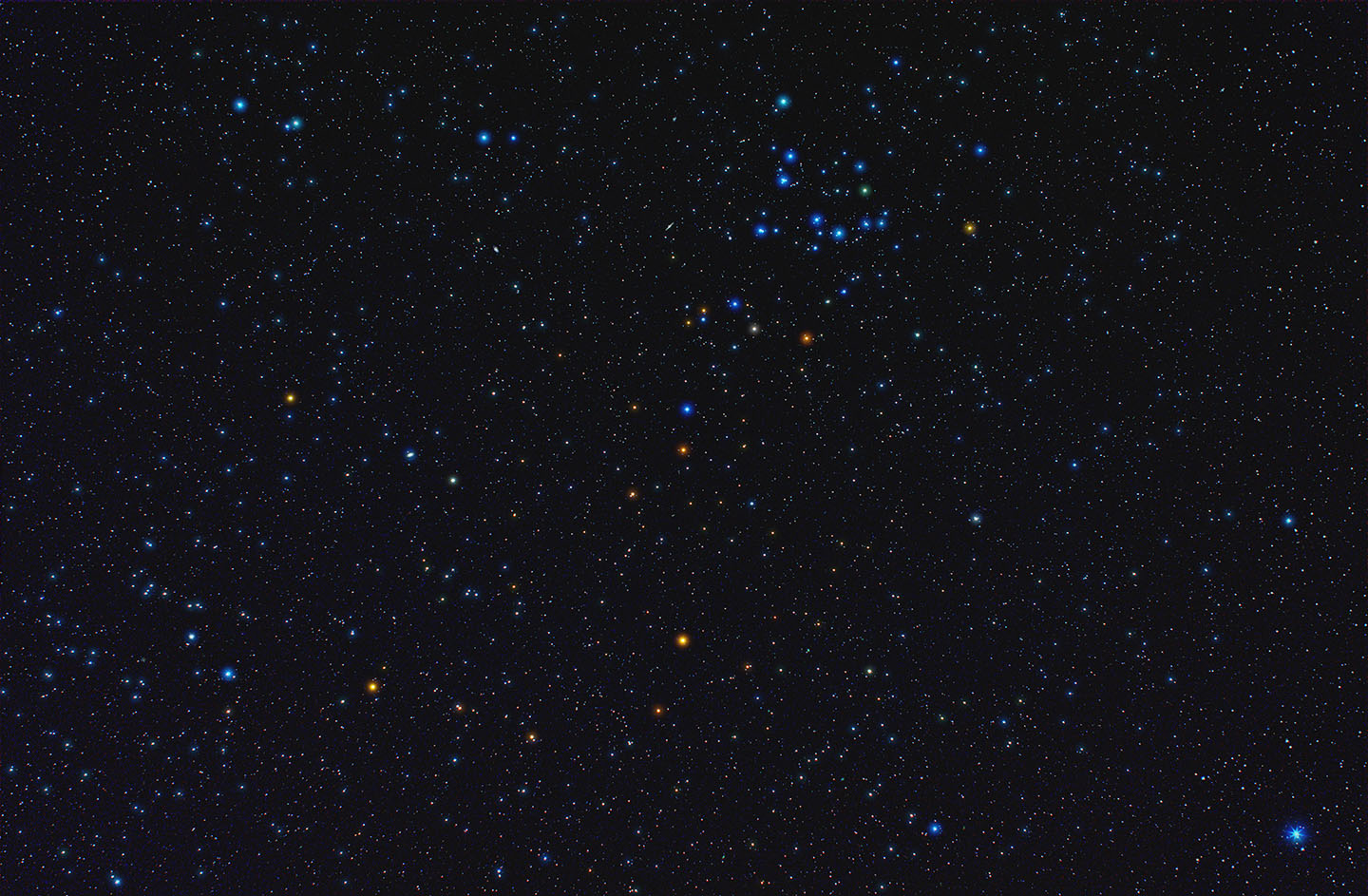 |
Coma Berenices
|
|
1st May 2022Leo Minor Constellation |
Another small inconspicuous constellation that is not original and was created by Hevelius in 1687. However it was noted by Ptolemy but he regrared it as not belonging to a constellation pattern. Due to an error by Bayer there is no star designated alpha and the actual brightest star is not Beta either - it is 46 Leonis Minoris and is the easterly (left) star of the constellation at mag 3.8. Prominent in the images though is the little group of 4/5 stars (the northern one is double) at its centre. Very much an area containg many galaxies but non of them bright enough to have become Messier objects. I have selected the galaxy NGC 2859 to show (right) which I took several years ago. NGC 2859 is a barred lenticular galaxy at a distance of around 83million light years. It classed as a (R)SB(r)0 where the S0+ notation indicates ait is lacking visible spiral arms. It has a strong bar (B) of the "ansae" type, which means it grows brighter or wider toward the tips. These features are surrounded by a weak inner ring (r) that appears diffuse. The outer region of the galaxy has a prominent detached ring (R) - ref wiki.
|
|
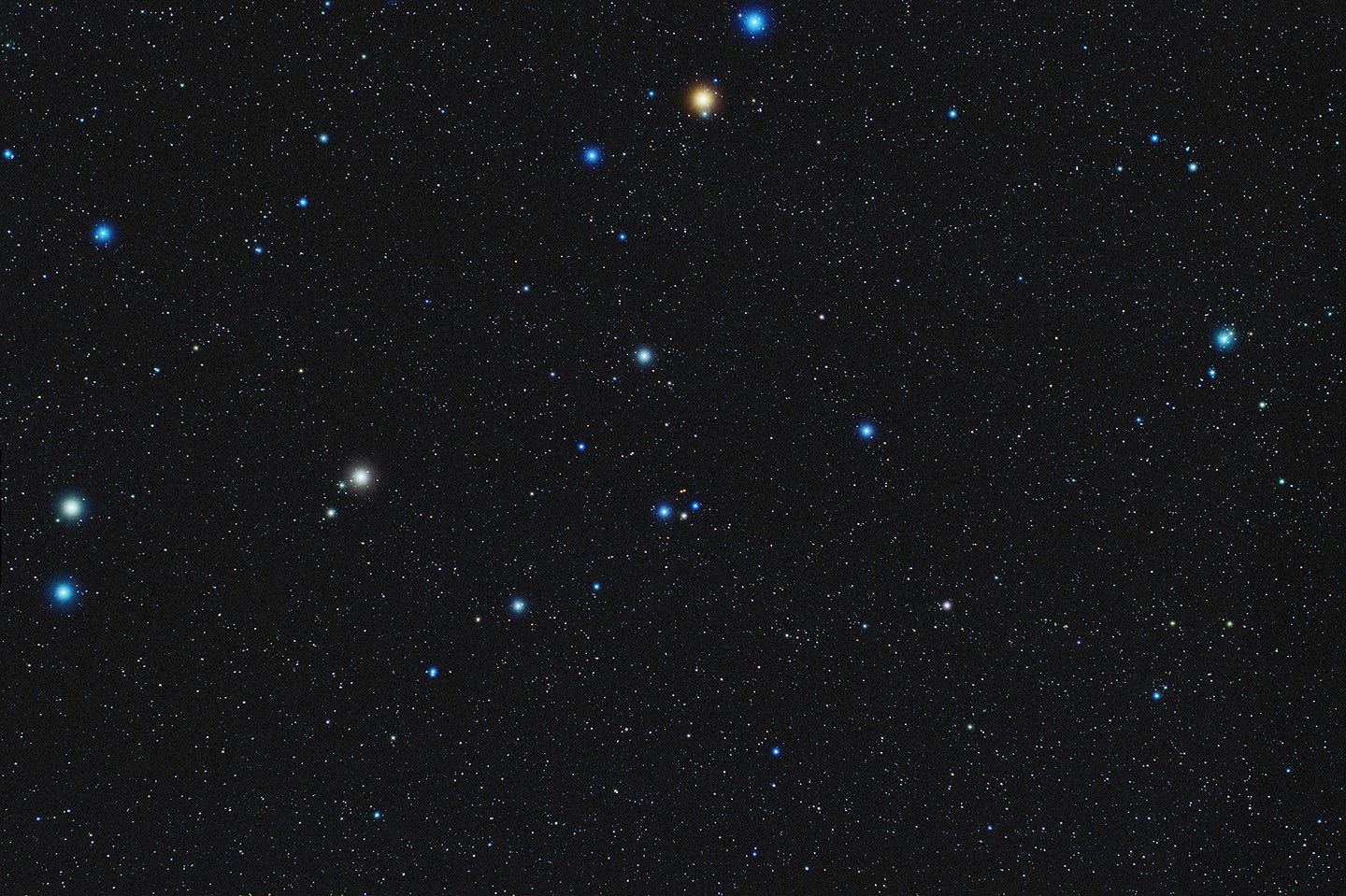 |
Leo Minor
|
|
25th April 2022Sextans Constellation |
Not an original constellation but one added by Johannes Hevelius in 1687. Sextans is Latin for the astronomical sextant, an instrument that Hevelius used for his observations. Sextans is in a sparse area of the sky - no wonder there was no ancient constellation here. It has only one star above the fifth magnitude, namely alpha at 4.5. The most prominent deep-sky object in Sextans is the Spindle Galaxy, NGC 3115. This edge-on lenticular galaxy is about 32 million light-years away and is several times bigger than the Milky Way. It is classed as a lenticular (S0) galaxy as it contains a disk and a central bulge of stars but has no spiral pattern (see right). Observations with the Chandra X-ray Observatory in 2011 indicated that the galaxy has a central black hole with a mass of about two billion solar masses. This would make NGC 3115 the nearest billion-solar-mass black hole to Earth. NGC3115 is just visible in the main constellation image - central about 1/5th the way up.
|
|
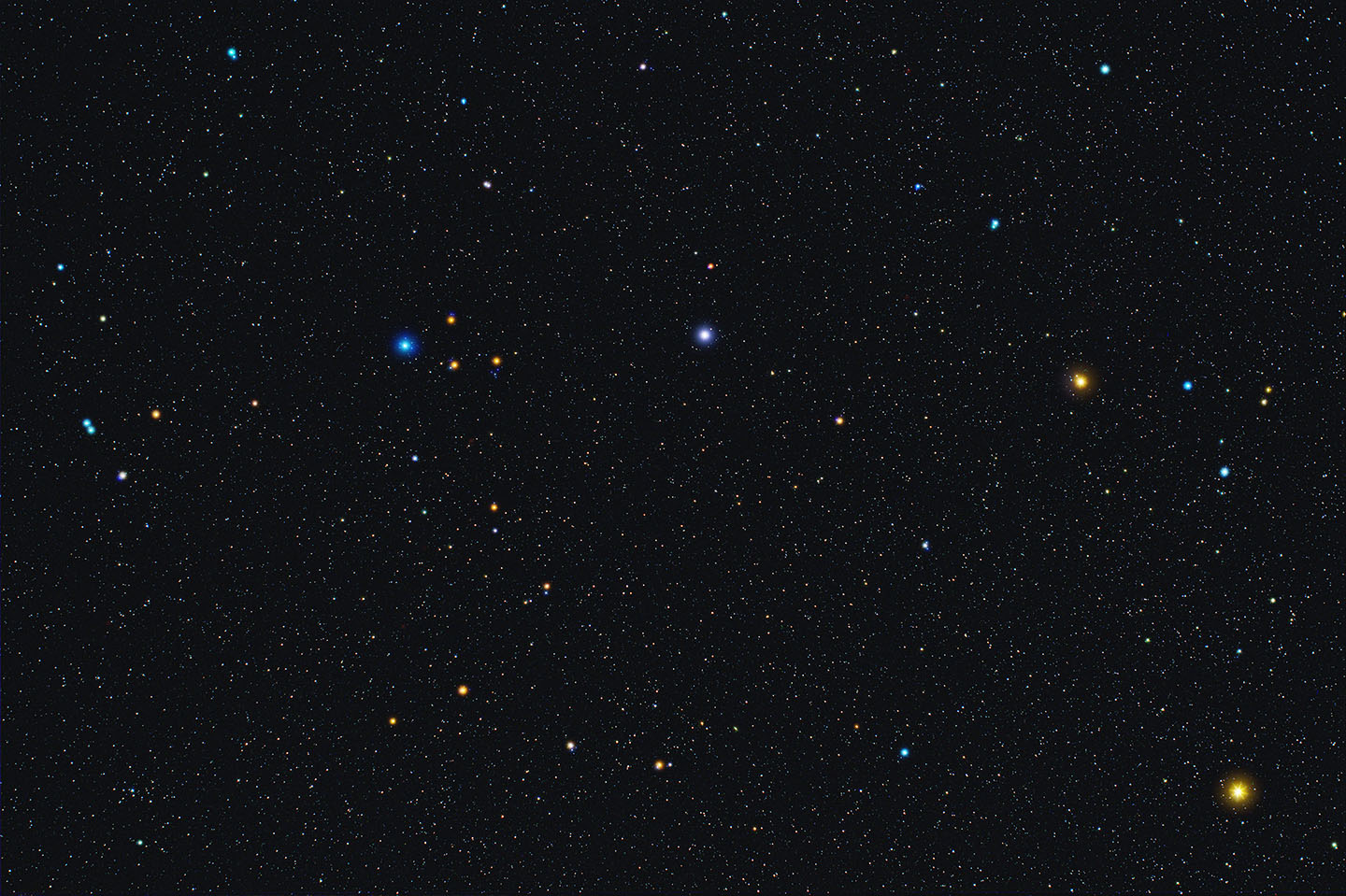 |
Sextans
|
|
18th April 2022Canis Minor Constellation |
Canis Minor is hardly the most spectacular of constellations having only two prominent stars, Procyon at mag 0.4 and Beta at mag 2.9. However, it was one I had not shot before but was ideal for the 50mm lens I was using. In Norfolk we had had several nights of Sahara sand in the atmosphere but this was shot on a night after it had been washed out of the atmosphere. Procyon obviously dominates the constellation and is the 8th brightest star visible from Earth. The reason it is so bright is it is only 12 light-years away. It is binary with a white dwarf companion. Canis Minor is not noted for deep-sky objects but the planetary nebula Abell 24 (see right) is probably the most noteworthy. This I shot in 2013 and for more details see my blog post for thet year.
|
|
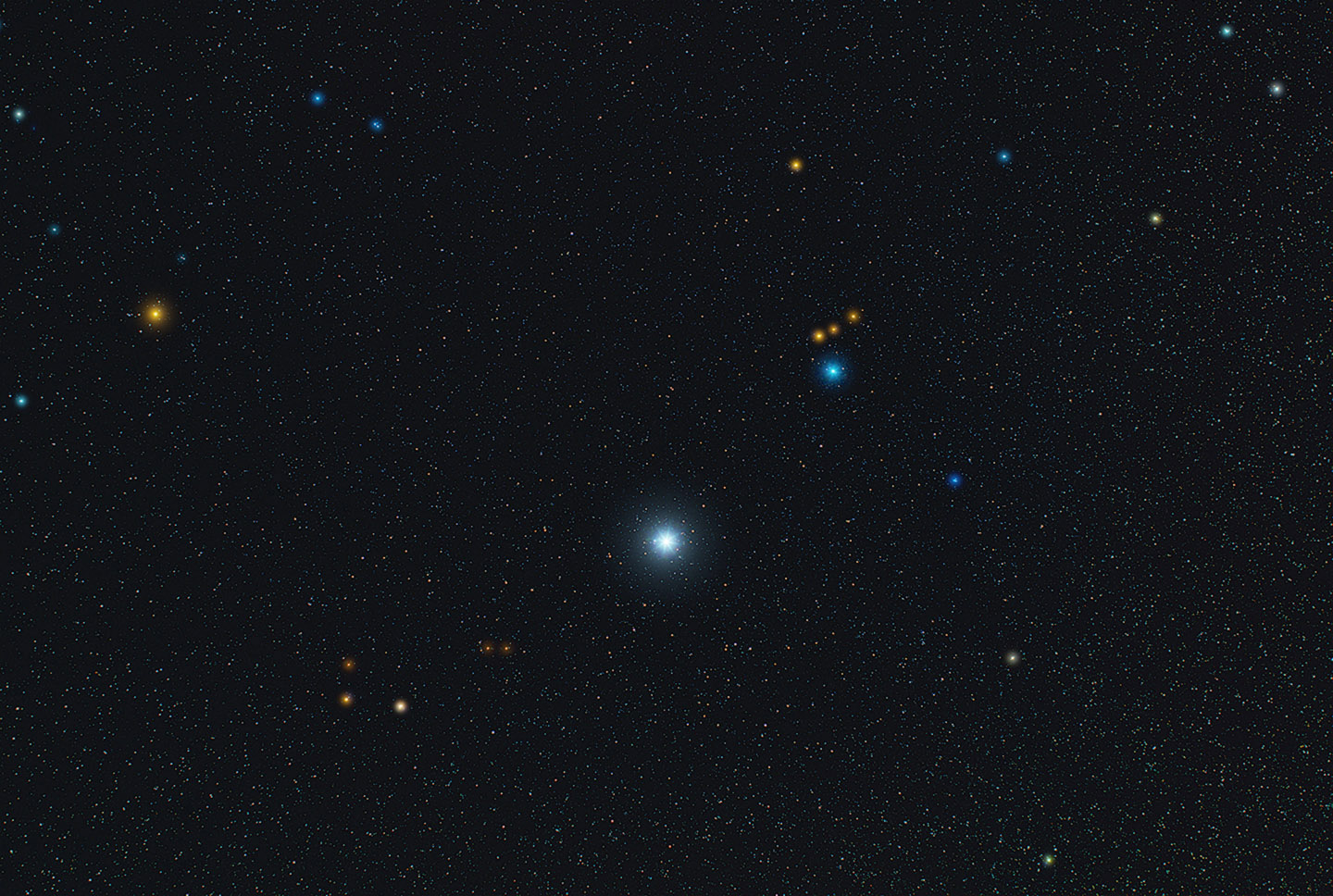 |
Canis Minor
|
|
7th April 2022Ursa Minor Constellation |
Returned to the 50mm lens as this is a perfect match for the constellation of Ursa Minor. Polaris, the northern star, is towards the top left. It is the brightest Cepheid type star in the night sky i.e. its intrinsic brightness is related to its period. Cepheids are a fundamental rung on the distance ladder enabling nearby galaxies to have their distances calculated. Perhaps the most interesting deep-sky object in Ursa Minor is the galaxy Polarisma Borealis, NGC3172 - inset right. Also visible in this image is the Diamond or Engagement Ring asterism - the little circlet of stars with Polaris acting as the diamond. Visible at the left edge is another popular asterism, the Seven Sistesrs of the Pole. This resembles the Pleiades but is somewhat larger. At the extreme left edge is the open cluste NGC188, one of the oldest of open clusters.
|
|
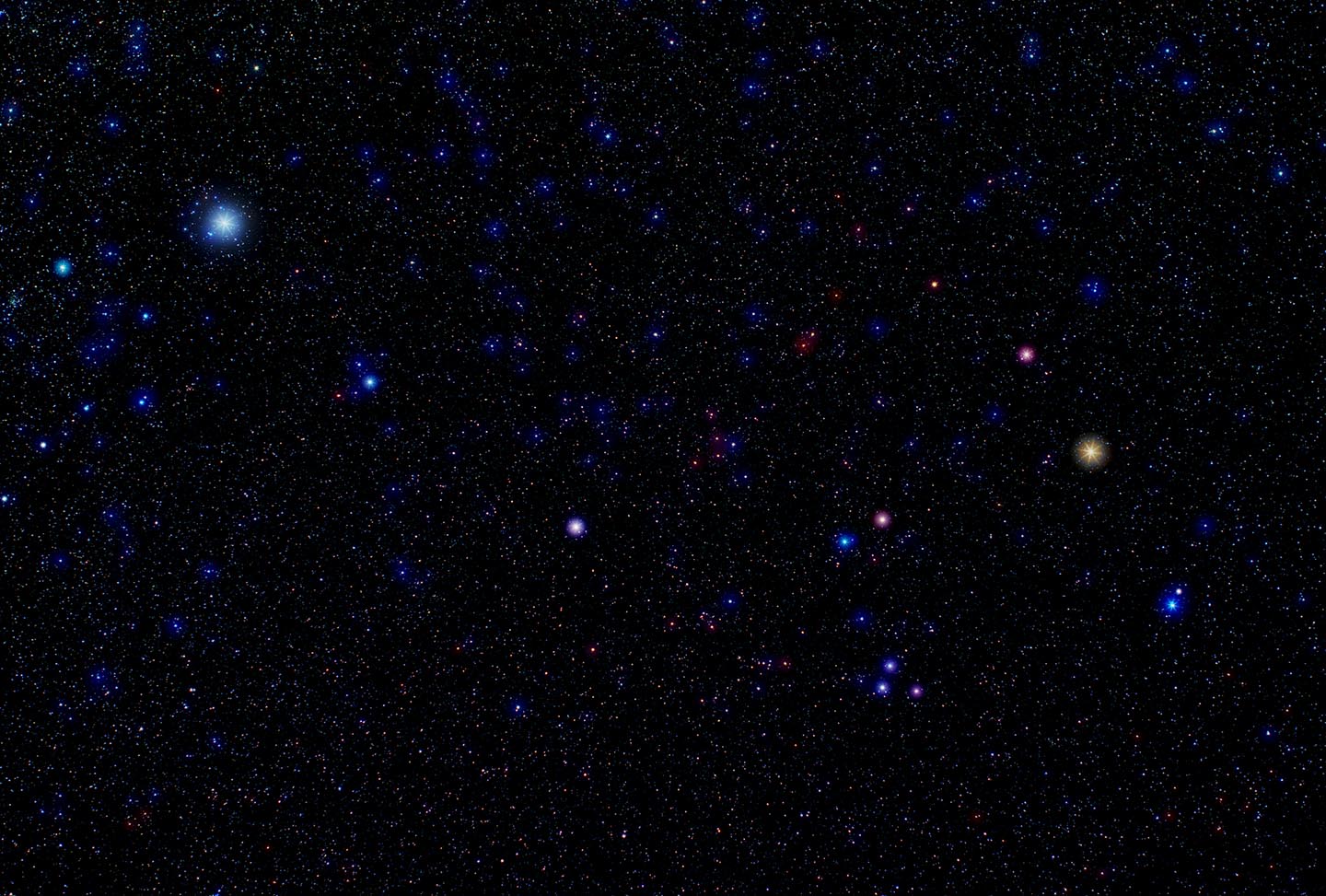 |
Ursa Minor
|
29th March 2022The Open Cluster M46 & M47 |
Another 2 hour run with the 200mm lens on the tracker but this time it was a very low down target near Sirius but actually in Puppis. Consequently only 66 images out of the 120 were sharp. Still this was sufficient to record the clusters clearly and also the Planetary Nebula (NGC2438) in M46 (right). M46: A relatively youngish cluster at around 250 million years with an estimated 500 member stars. The planetary nebula NGC 2438 near its northern edge is most likely unassociated since it does not share the cluster's proper motion - enlarged on right. M47: A very young cluster at only 78 million years old (wiki). This cluster was for a long time a "missing" Messier object. The coordinates he recorded for M47 were in error and the puzzle was only solved in 1959 by TF Morris. Messier used relative coordinates rather than absolute ones ie offsets from a known star. When the signs for the offset were switched it was obvious he had meant this cluster. There are around 500 members with the brightest being HD 60855, a mag 5.7 Be star. The fainter cluster above (north) of M47 is NGC2423
|
|
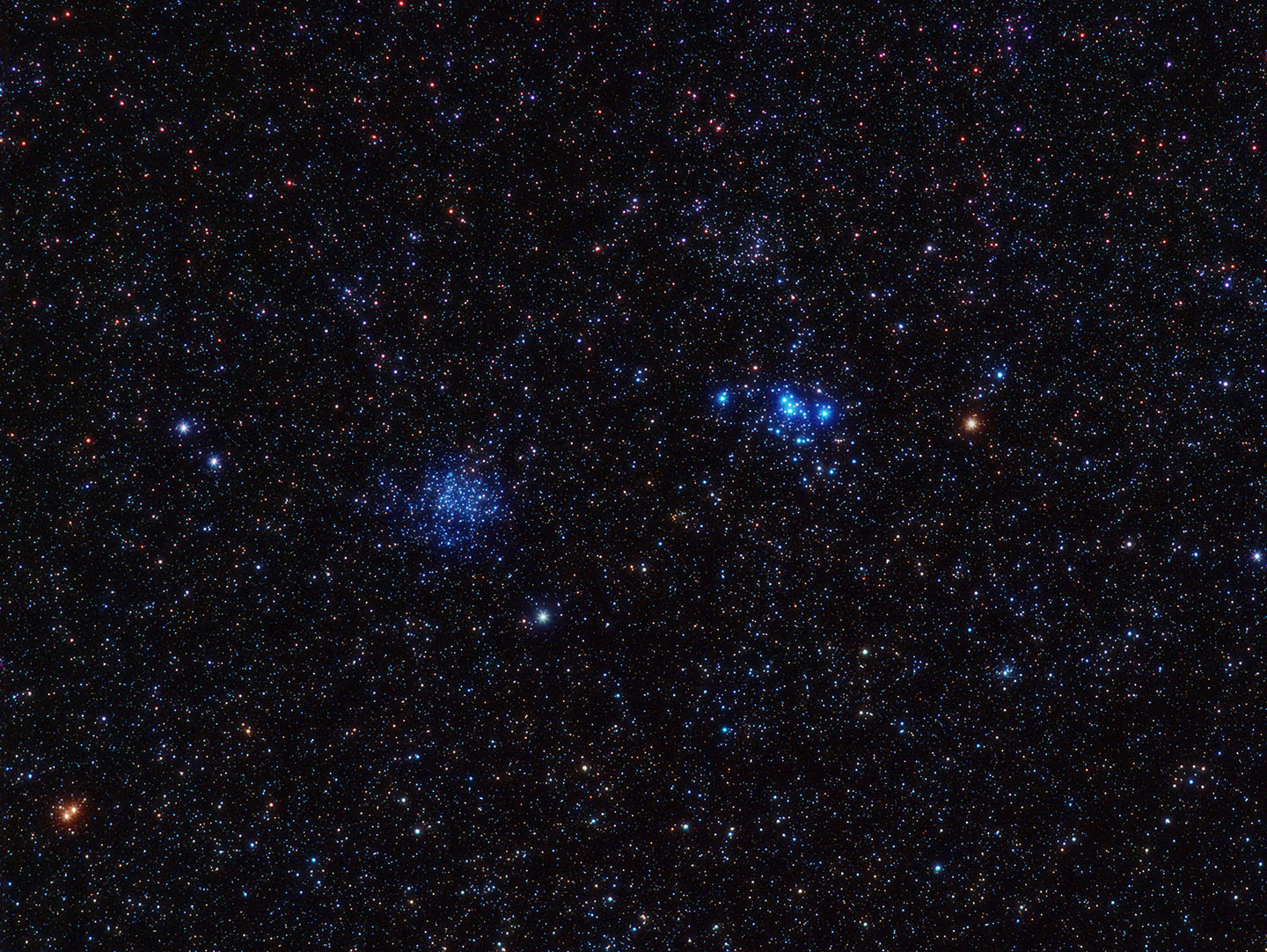 |
M46 & M47
|
|
19th March 2022The Praesepe or Beehive Cluster, M44 |
Decided to switch to a 200mm lens as this is a good fit for the 4 bright stars (the hive?) around the cluster. It is also better than the Pentax for stars, which suffers from halos. Shot for 2 hours and selected the best 80 frames from 120 - quite a few were mis-tracked as a 200mm lens is pushing your luck on a simple unguided tracker. A youngish cluster at around 600 million years and relatively close at 600 light years. It shares a proper motion with the Hyades Cluster suggesting a common origin. It has just over 1000 gravitationally bound members. One of the first objects observed by Galileo with his telescope (1609) and he was able to count 40 stars.
|
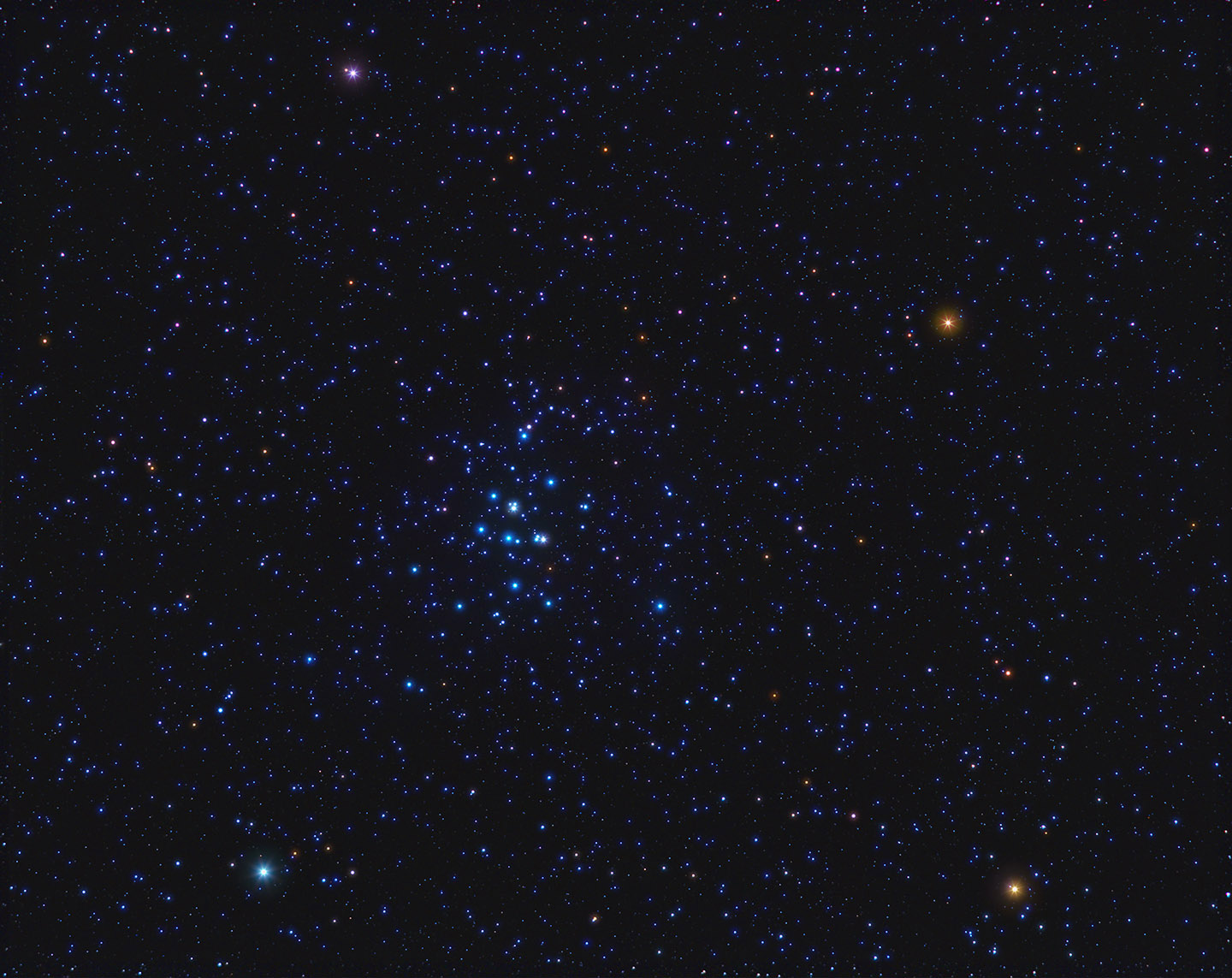 |
The beehive Cluster, M44
|
|
17th February 2022Rigel & the Witch Head Nebula (IC 2118) |
I noticed that on my recent Orion shot there was a bit of the Witch Head Nebula on one edge so decided to give it a try with my old Pentax 135mm lens. I reduced the exposure to 3 mins as 135mm unguided would be pushing my luck. There was a lot of light pollution as I was shooting in the direction of Norwich and this object is always low from here. South is up in this view. It is a faint reflection nebula i.e. it shines by the star light from Rigel and is slightly blueish rather than the red of the nearby Orion Nebula and Barnard's Loop. It is unsure whether its shape is due to it being ancient supernova remnant (wiki) or just an odd shaped gas cloud.
|
|
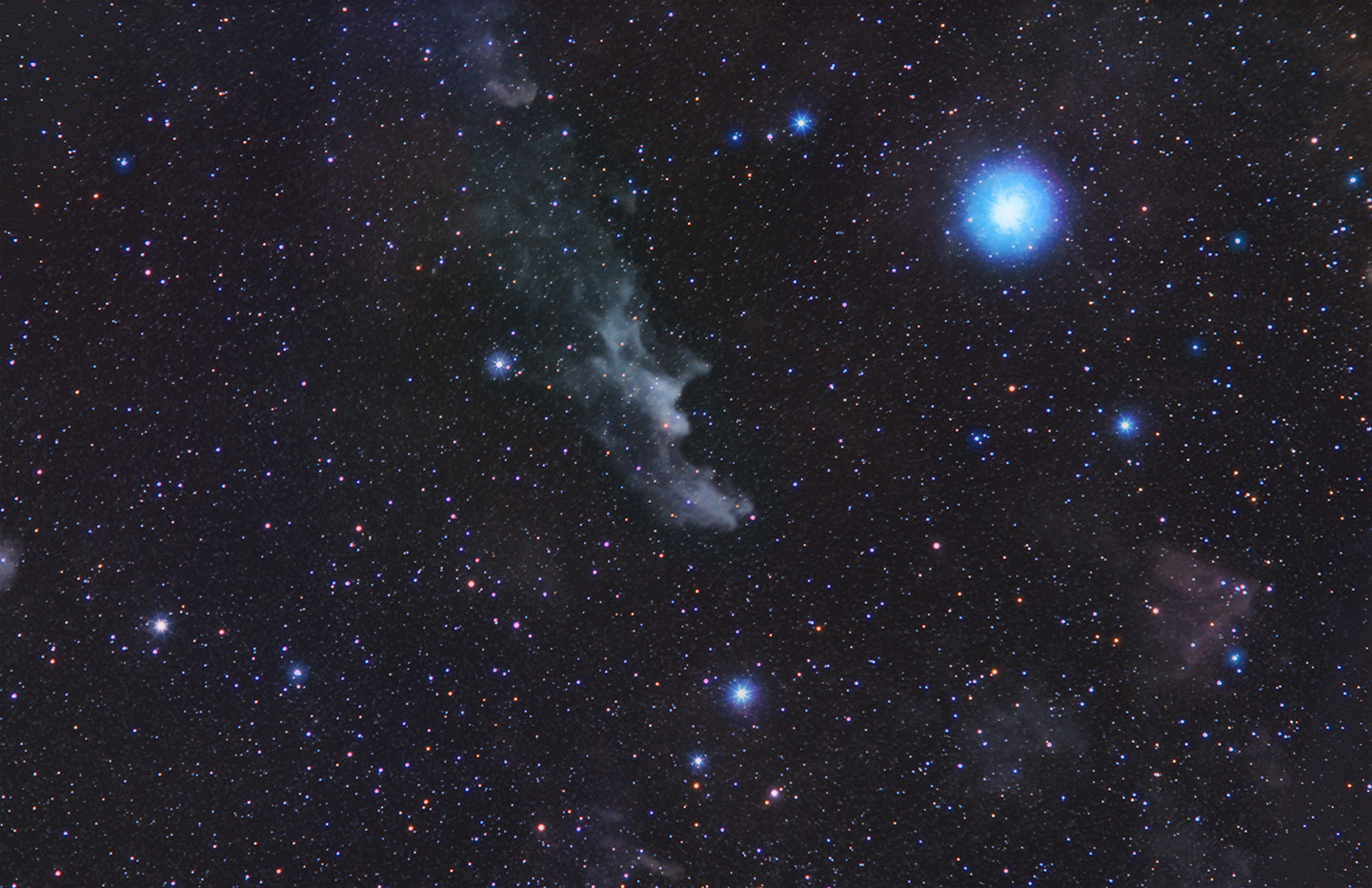 |
Witch Head Nebula
|
|
30th January 2022Orion |
This time I ran for 4 hours as there is plenty to record in Orion. With the 50mm lens on the 60D it needed to be switched to protrait mode to get the best bits of the constellation in. Again I used the green laser for polar alignment and over the 4 hours there was just a small amount of drift and rotation but nothing to worry about. Quite a lot of light pollution as I was pointing in the direction of Norwich but Siril made a good job of getting rid of most of it.
|
|
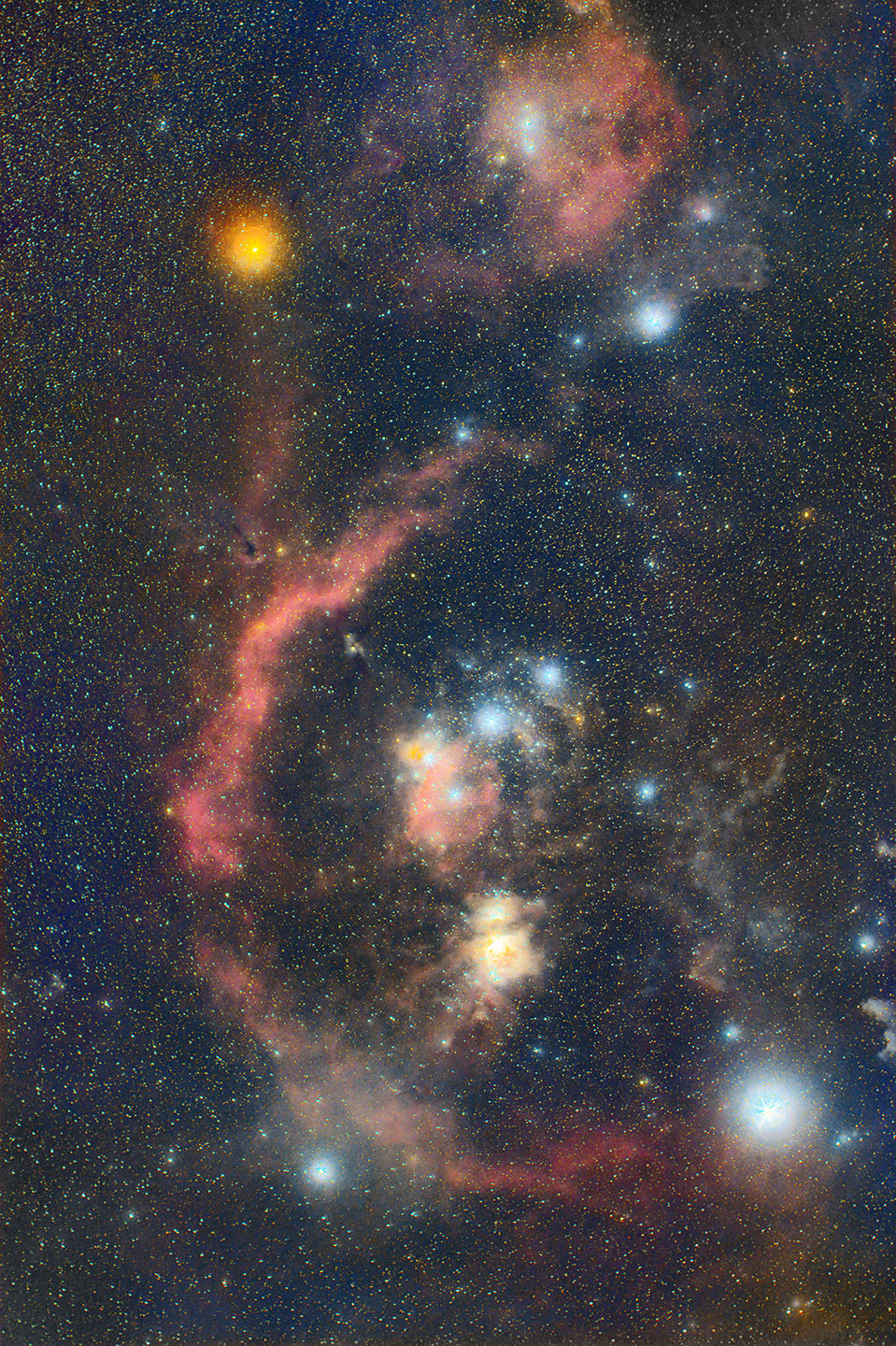 |
Orion from Norfolk
|
|
22nd January 2022The Hyades-Pleiades Region |
Unpacked the tracker and decided to see what was possible with a simple 50mm lens. Yes there was some light pollution to get rid of but much less than it would have been from Lancashire. Used a green laser inside the pole axis for polar alignment. Very easy and super fast with no crouching down on wet/frozen ground to look up a pole finder scope. Still assessing the best spot in the garden for an observatory - the issue I have is too many overhead phone lines.
|
|
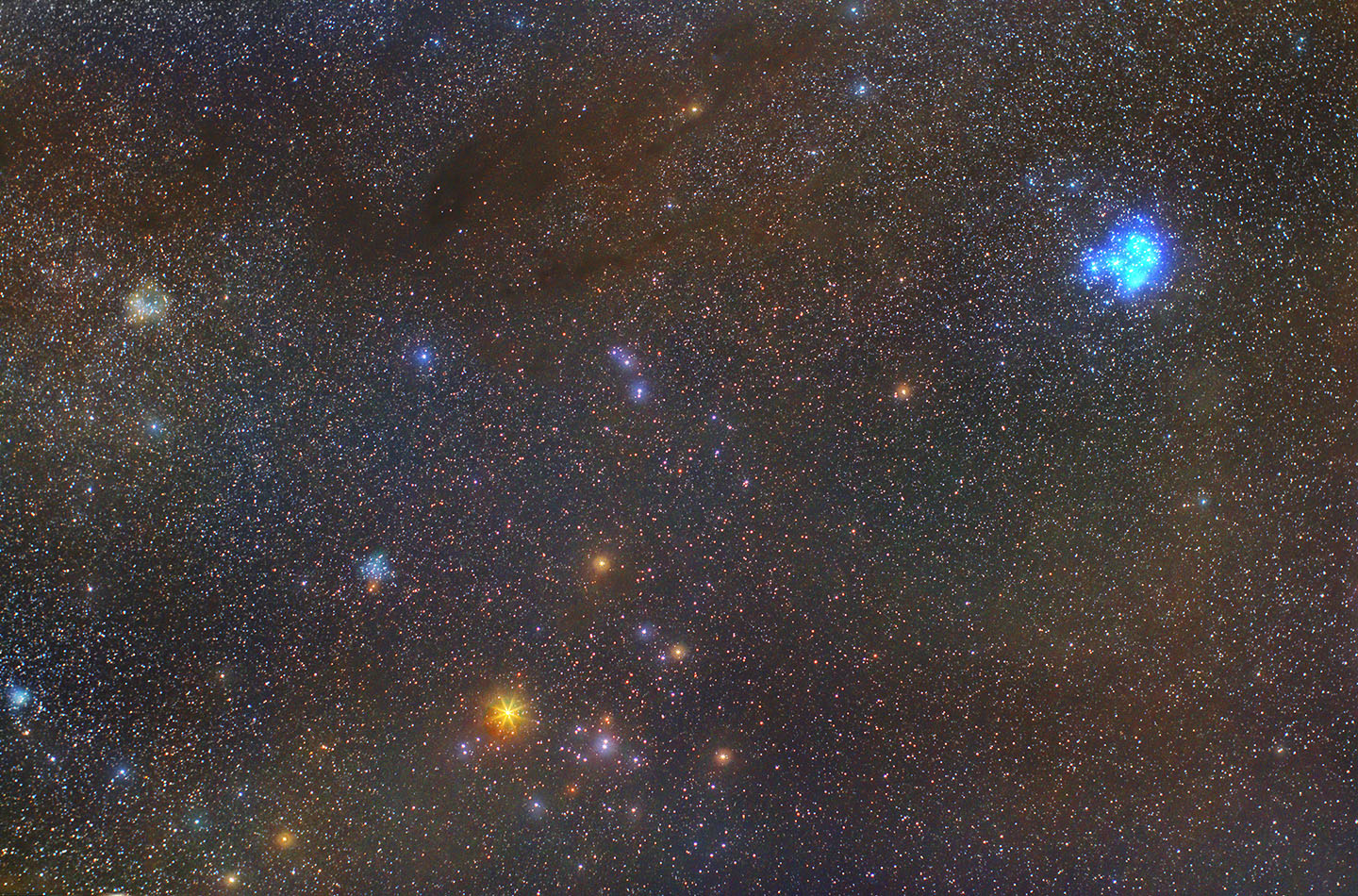 |
Hyades - Pleiades from Norfolk
|
|
The imageBLOG continues at Archive 2019-21 Click Here
|
Please remember these images are copyright David Ratledge. Contact me before any use is made of them.
